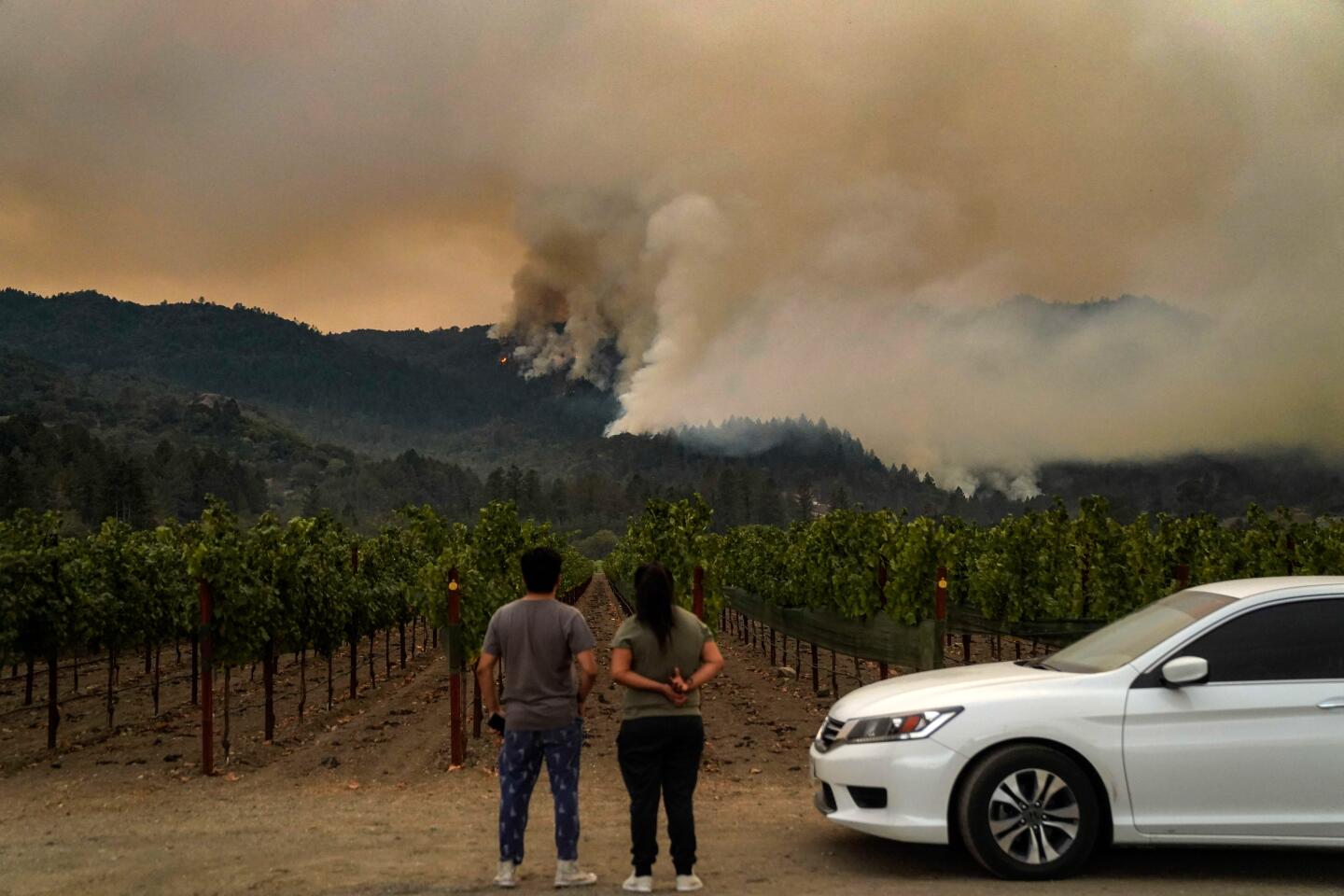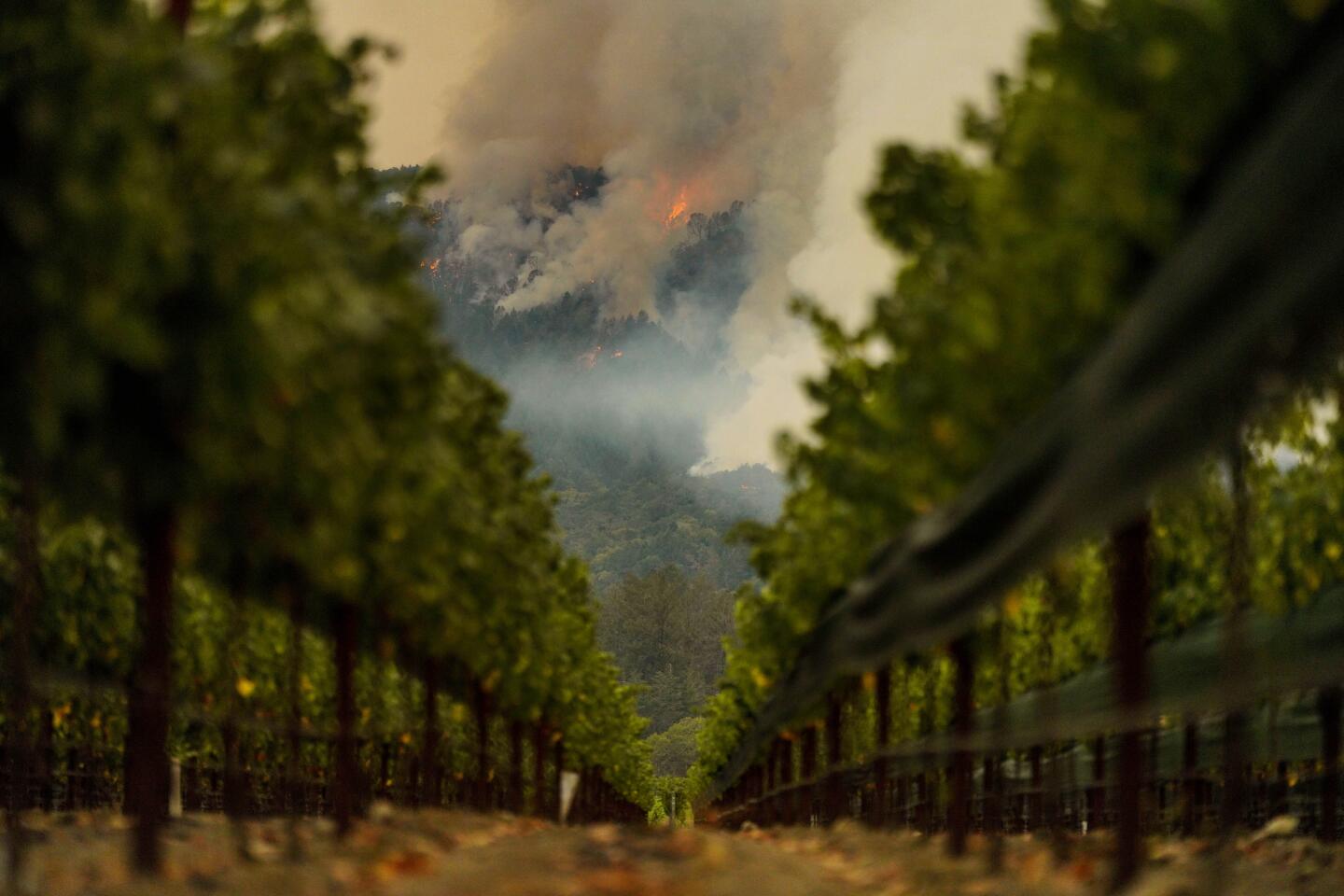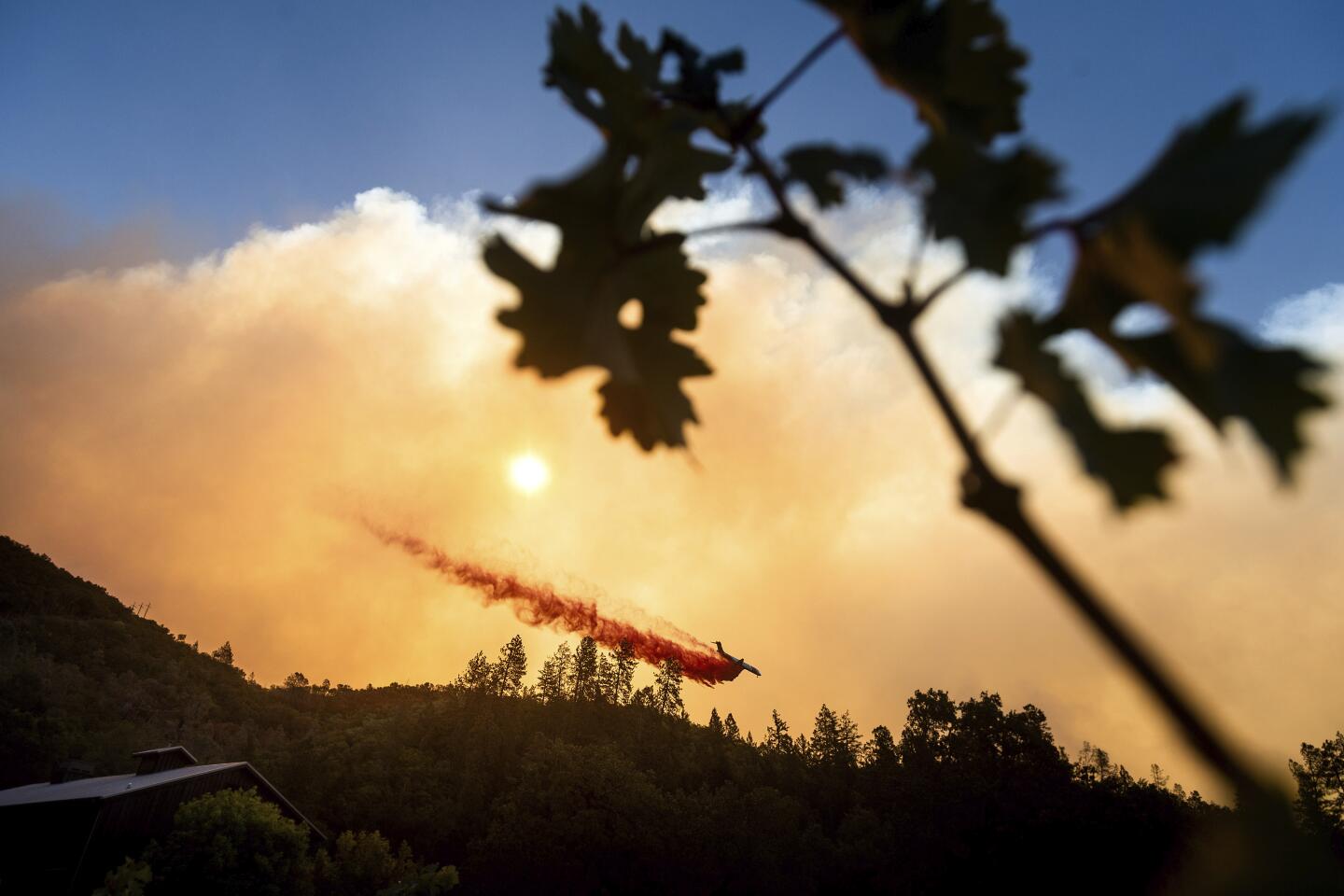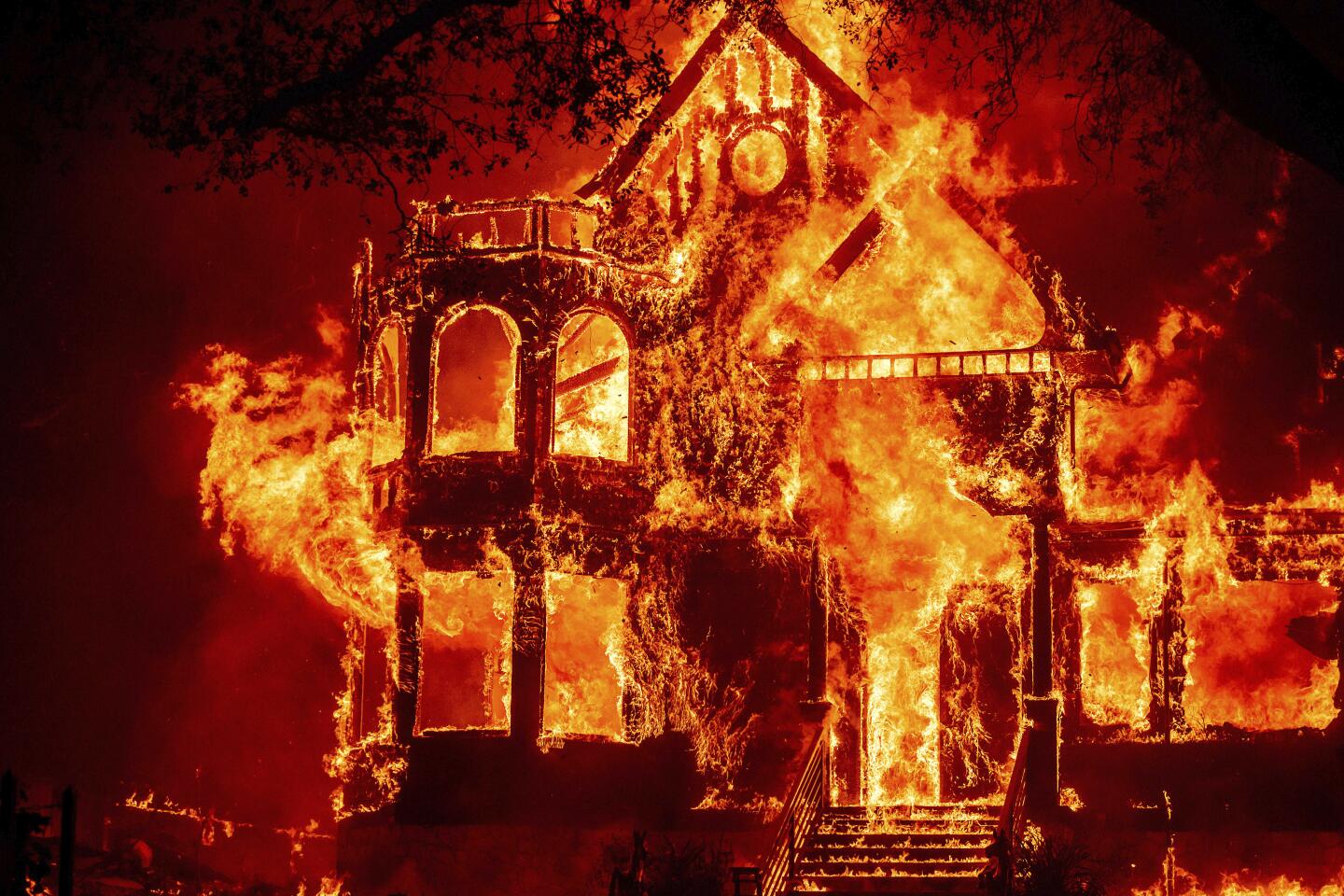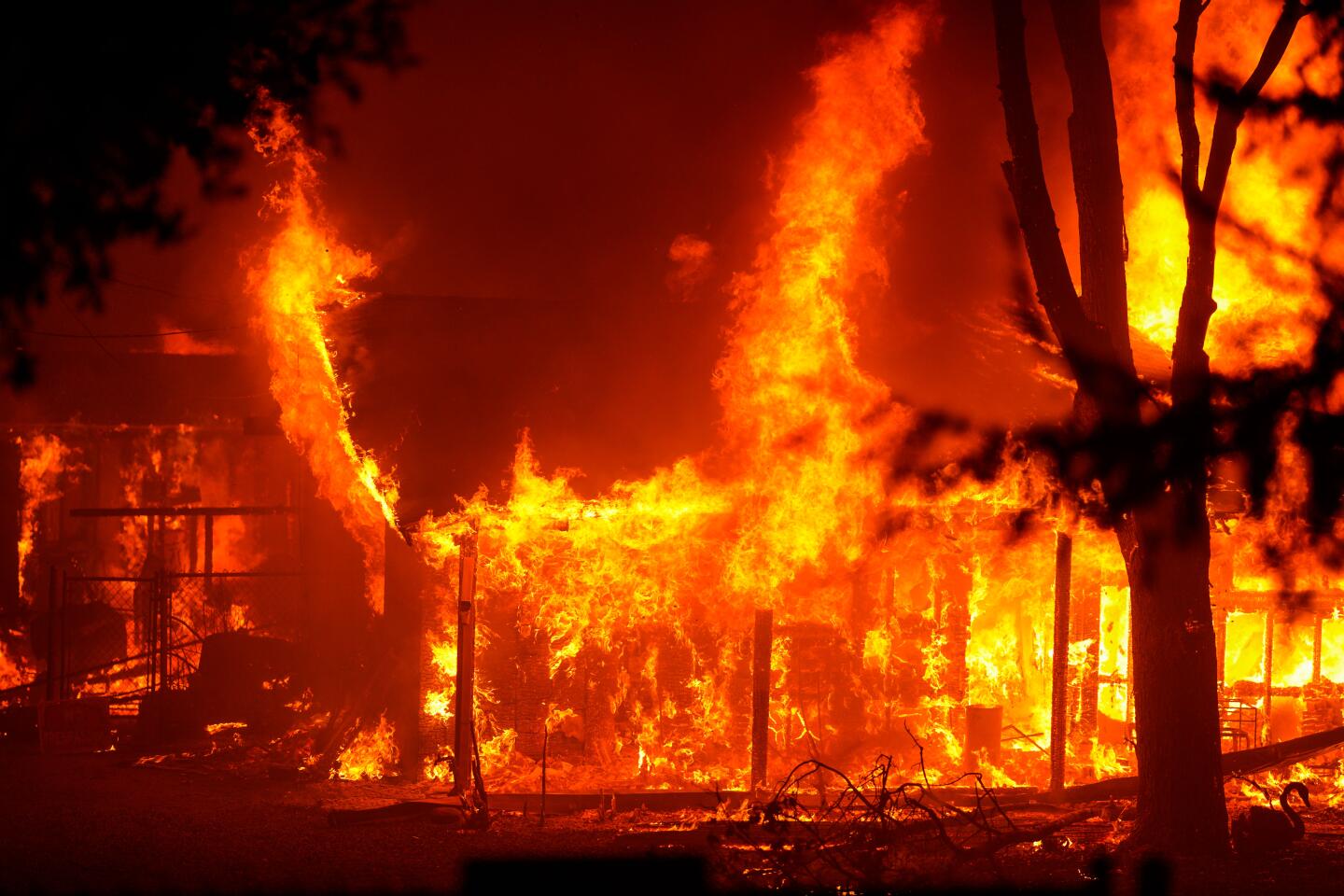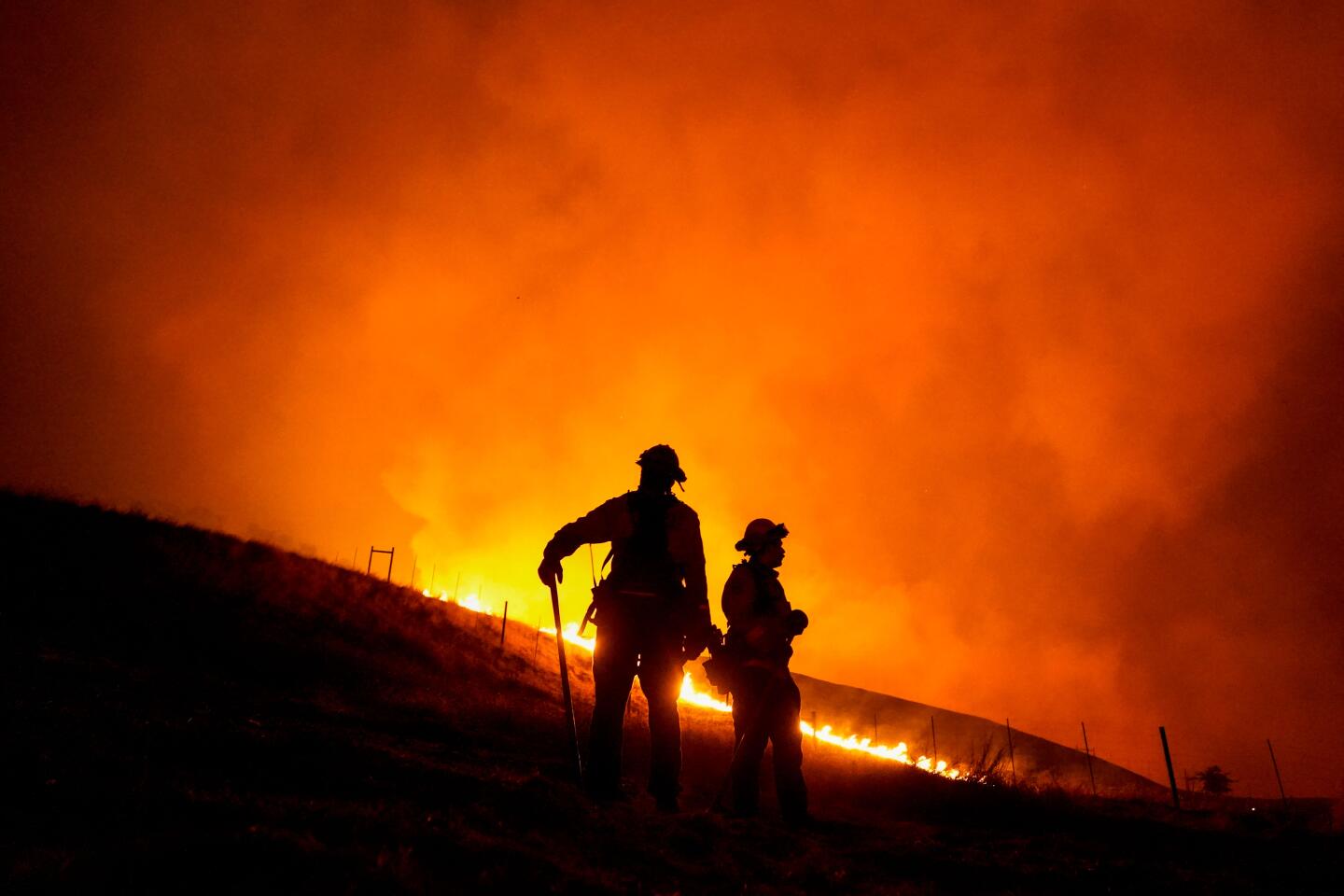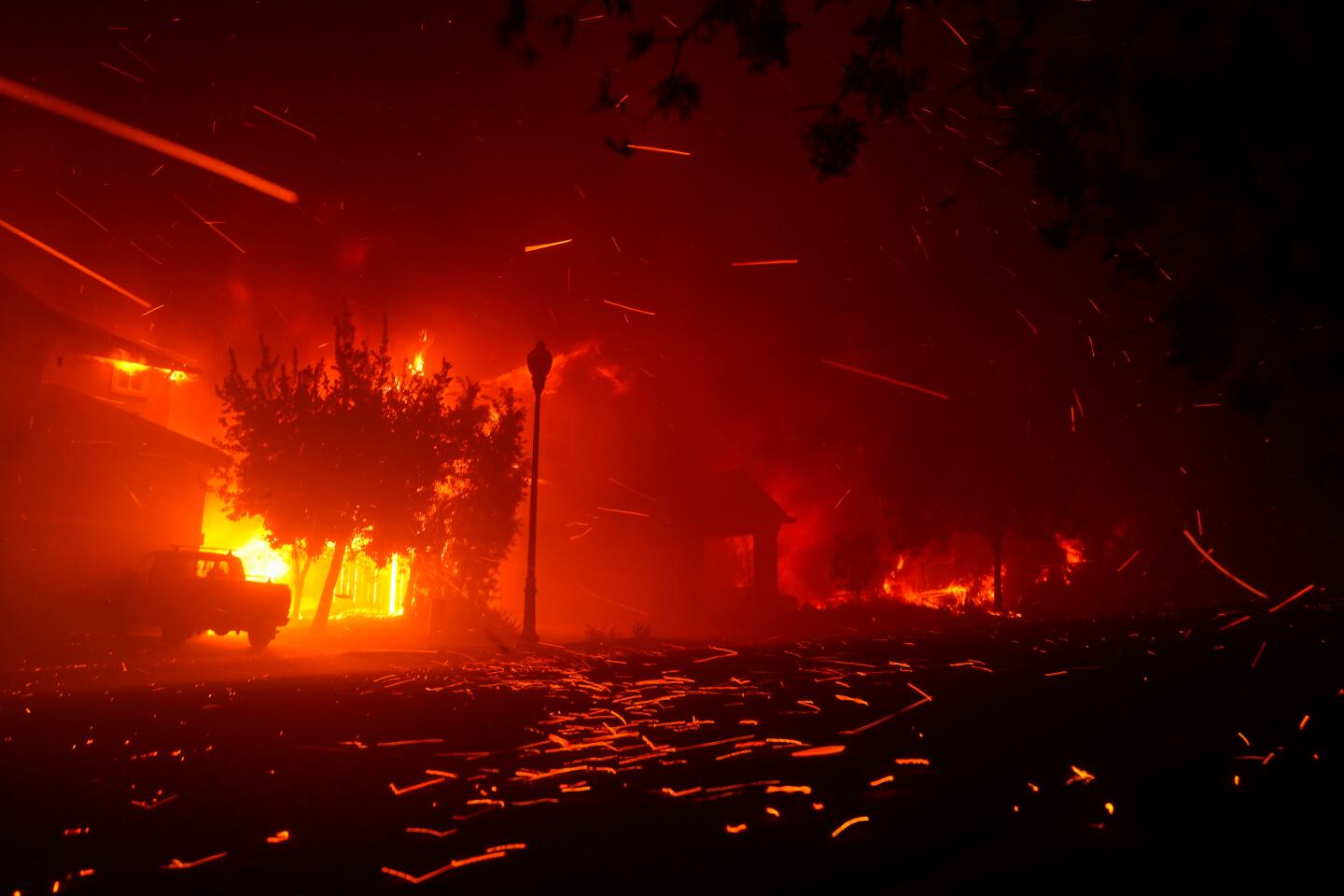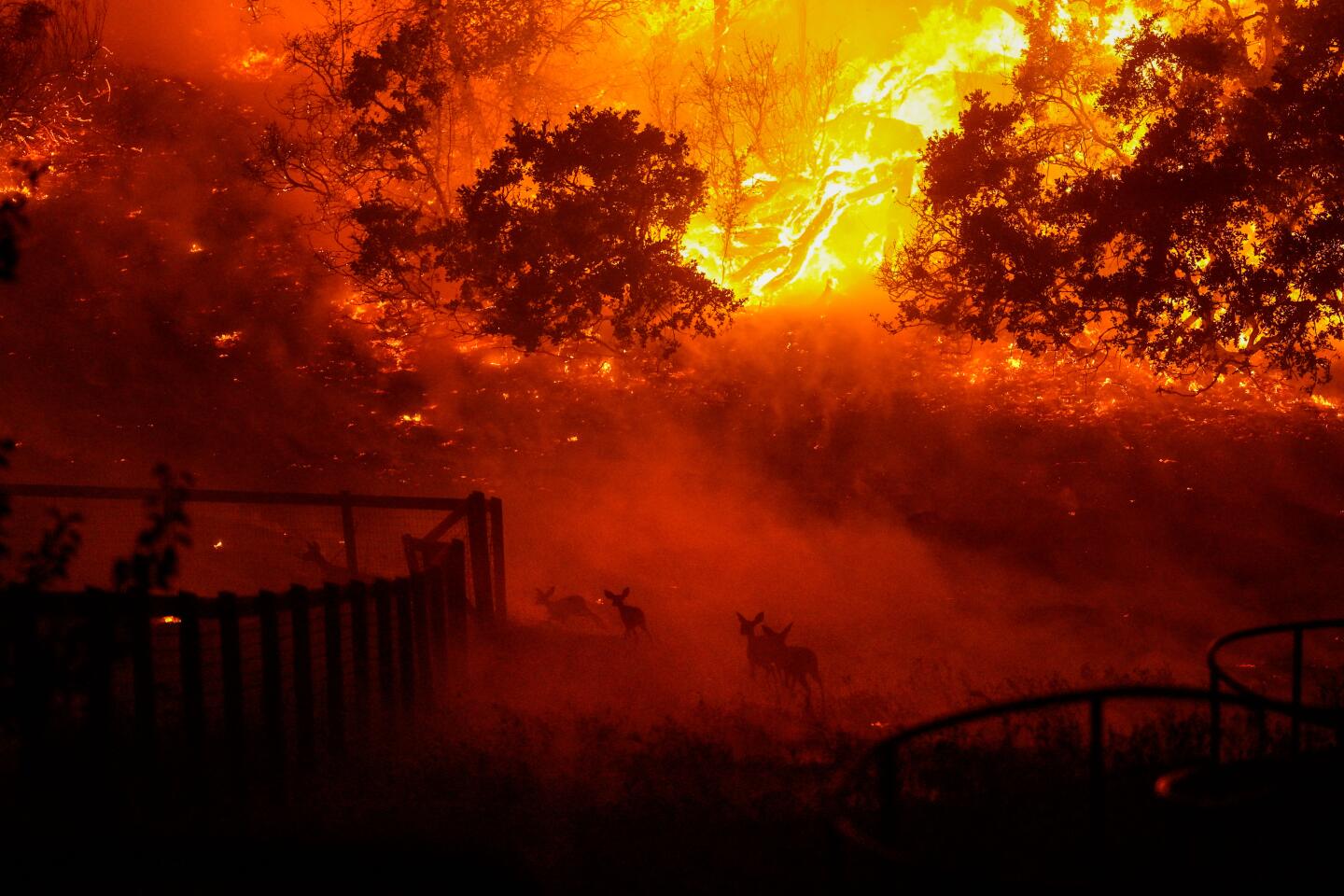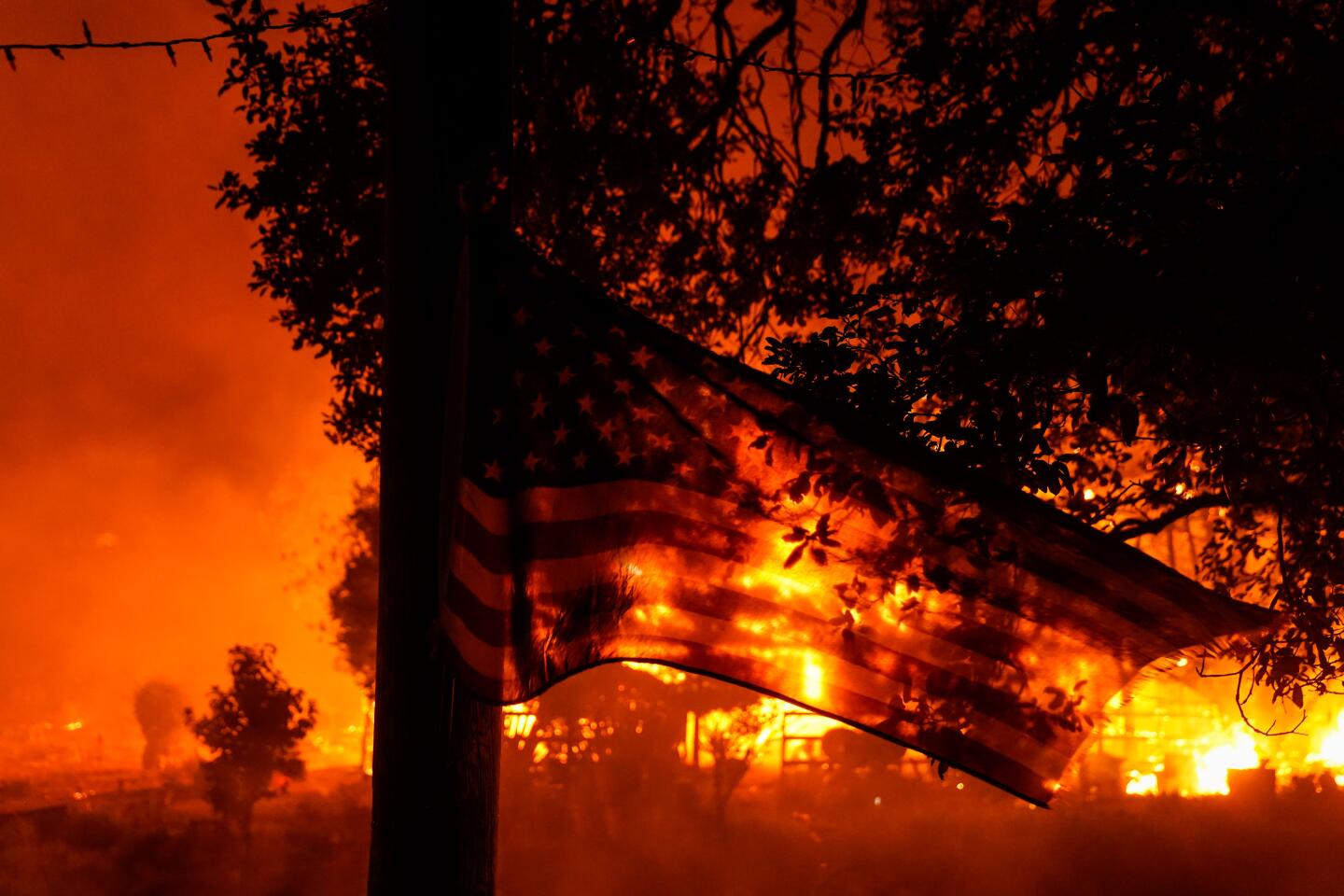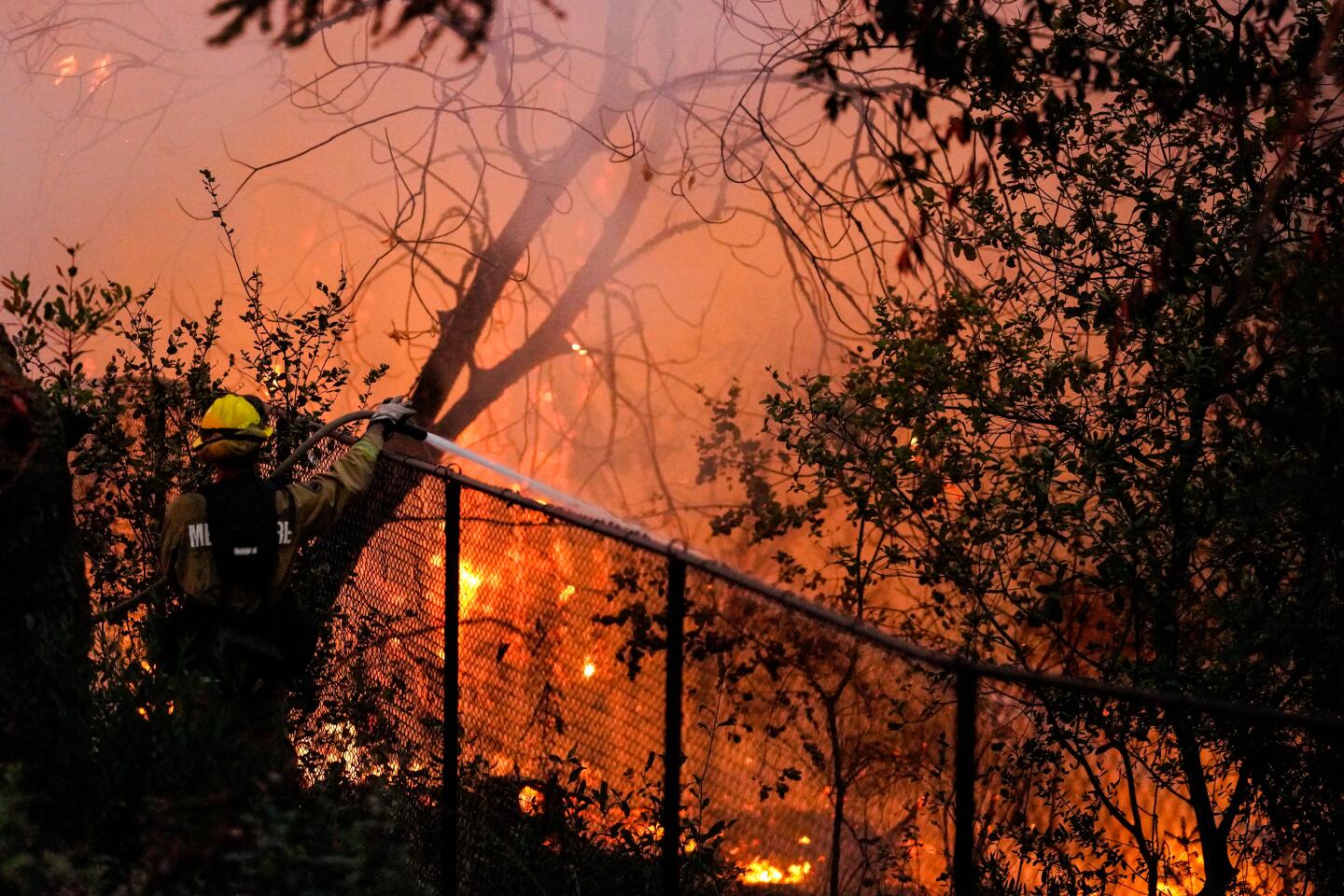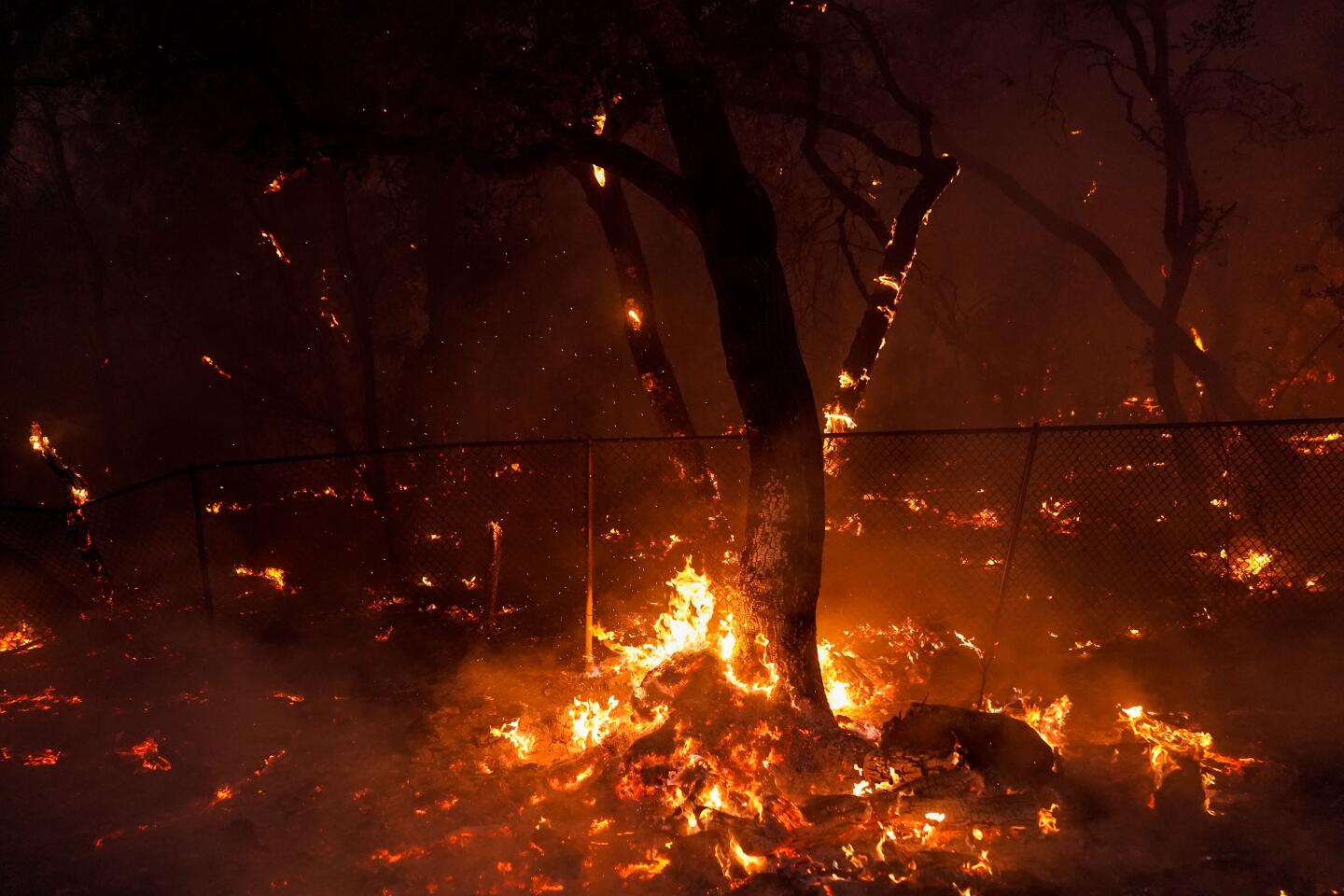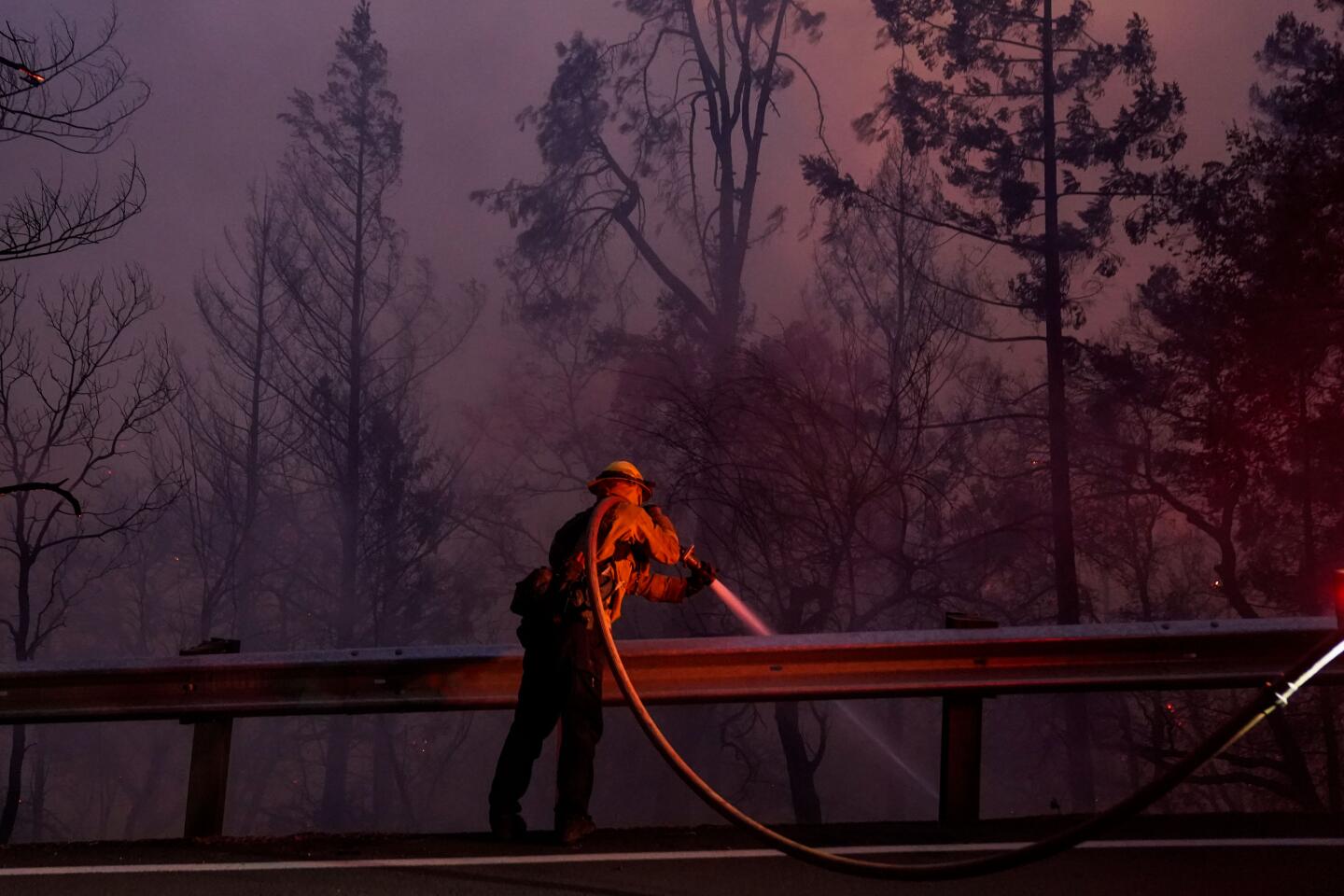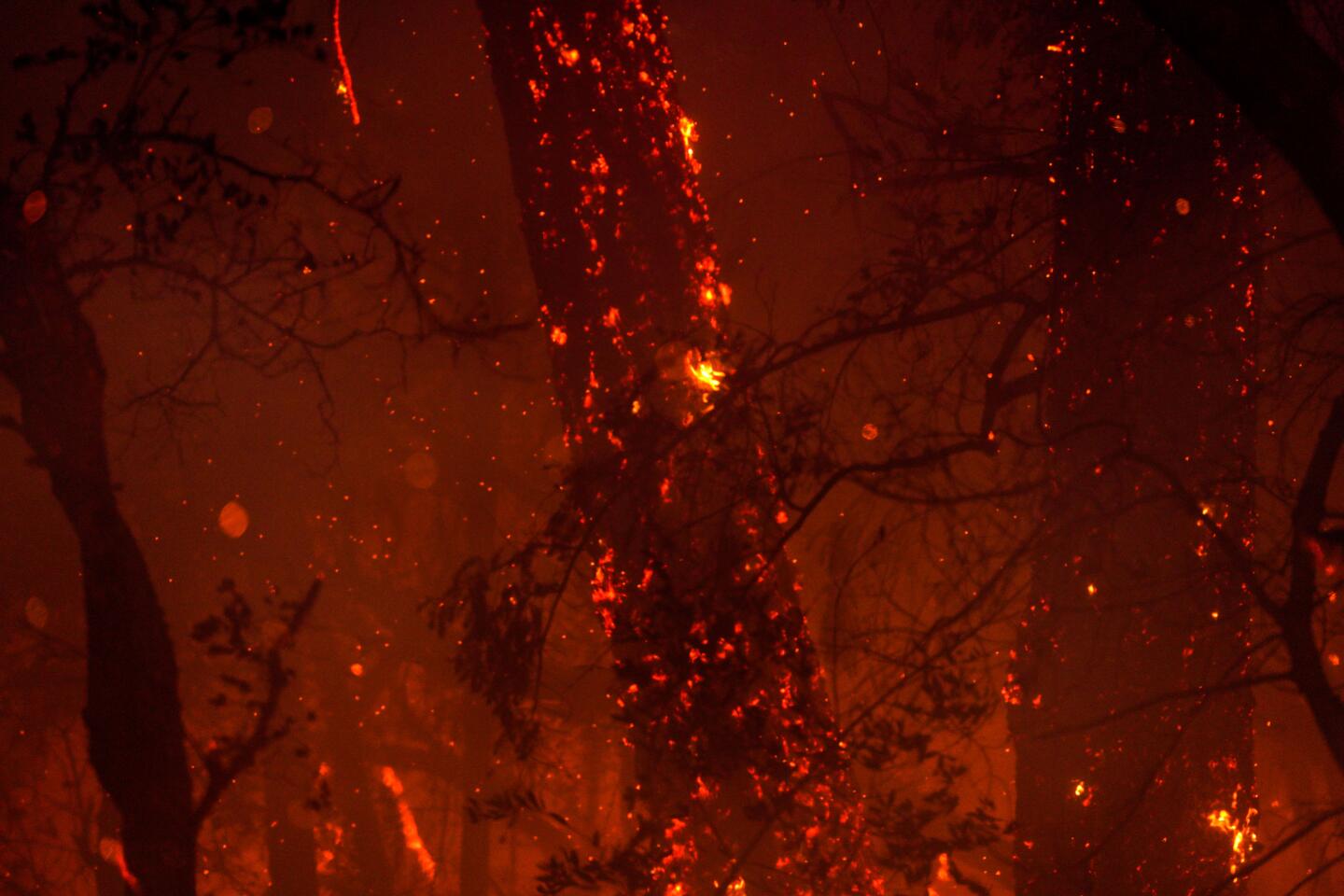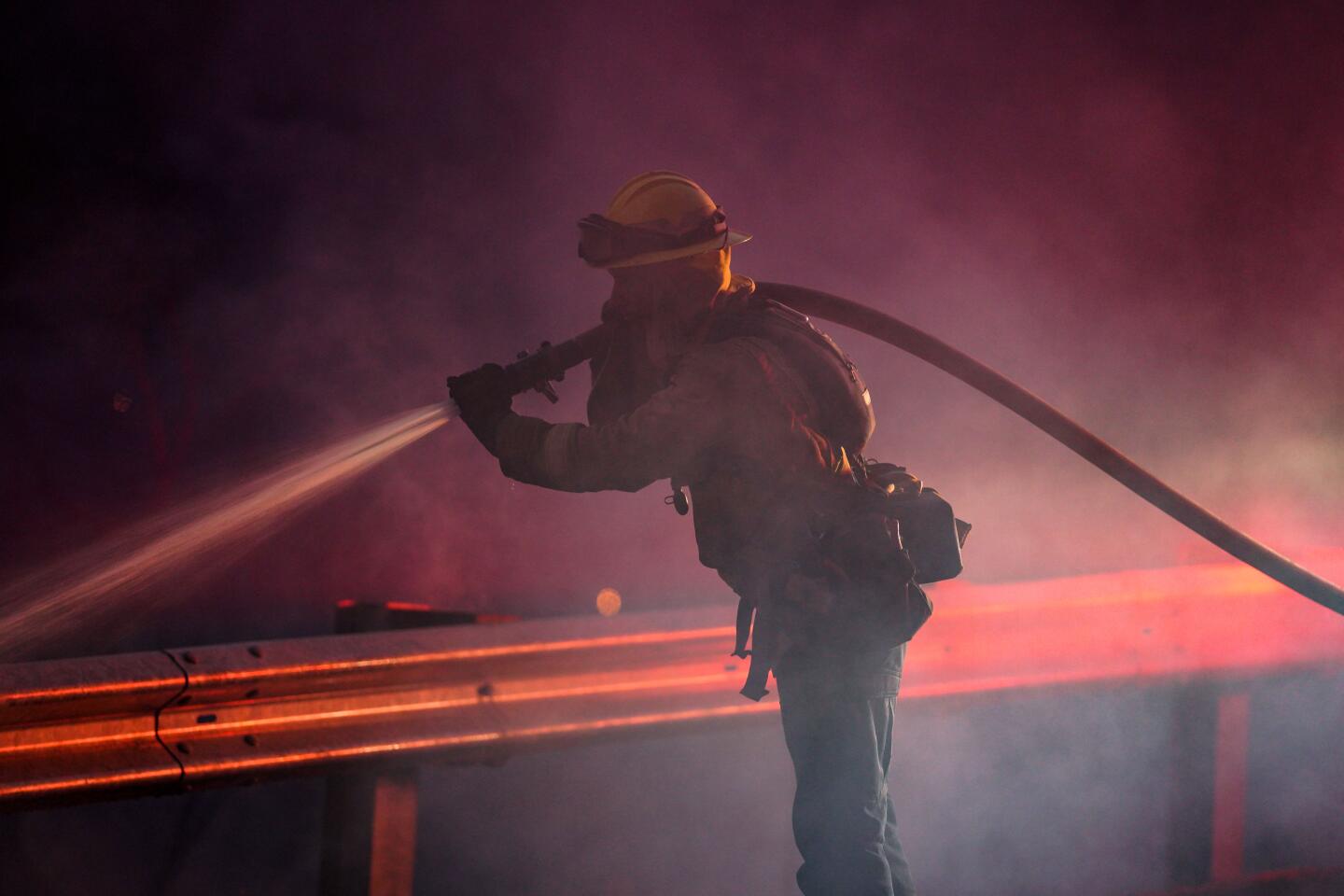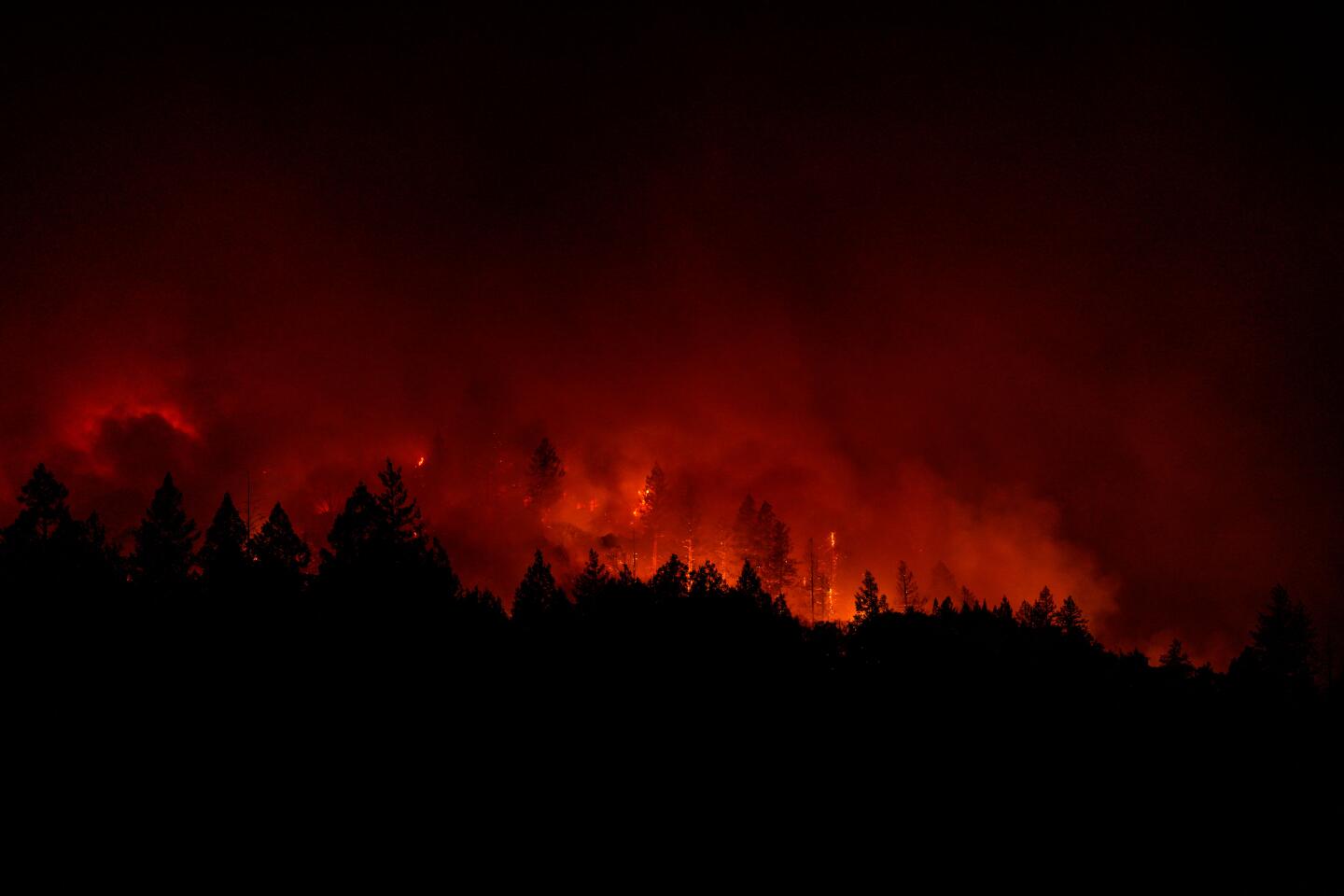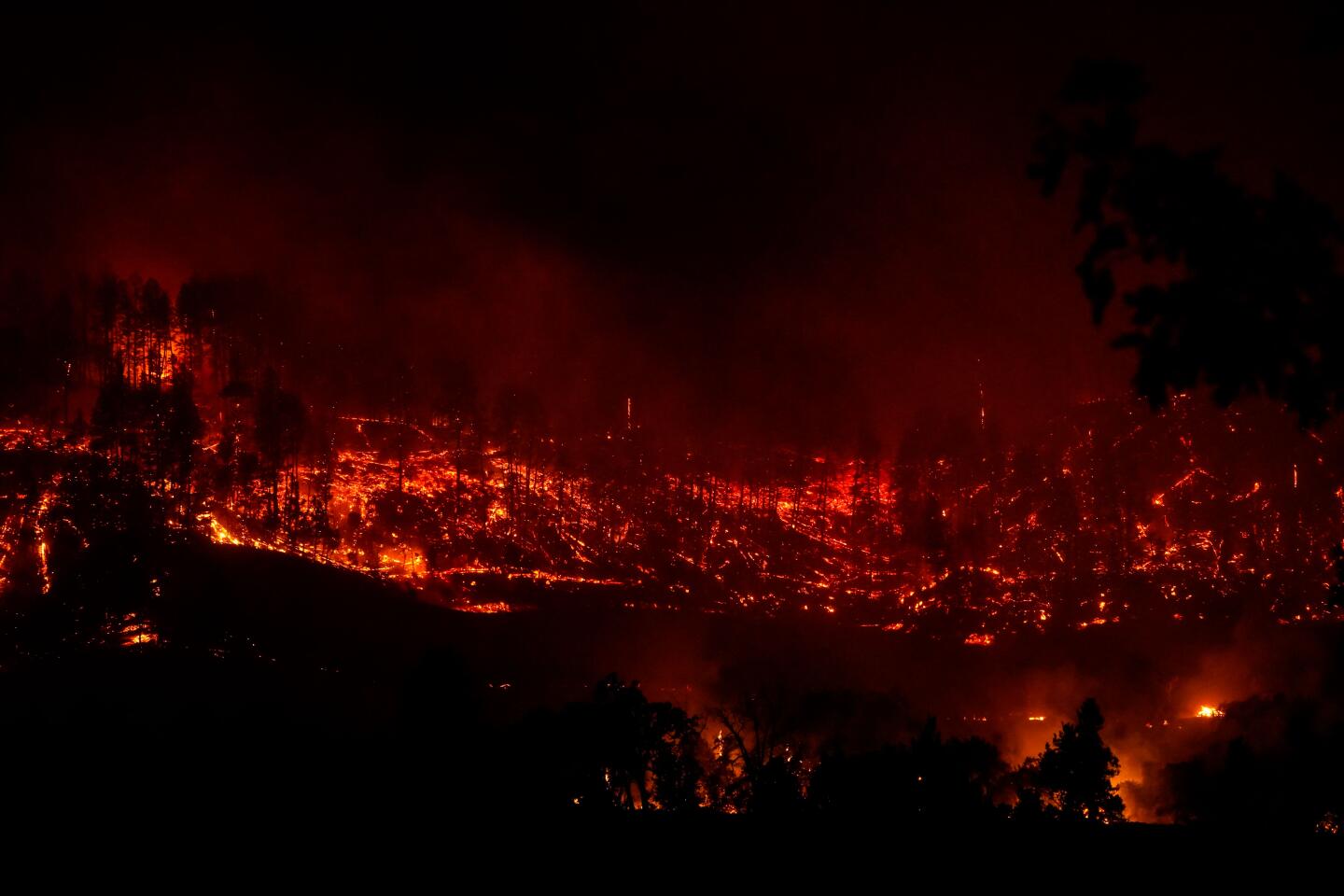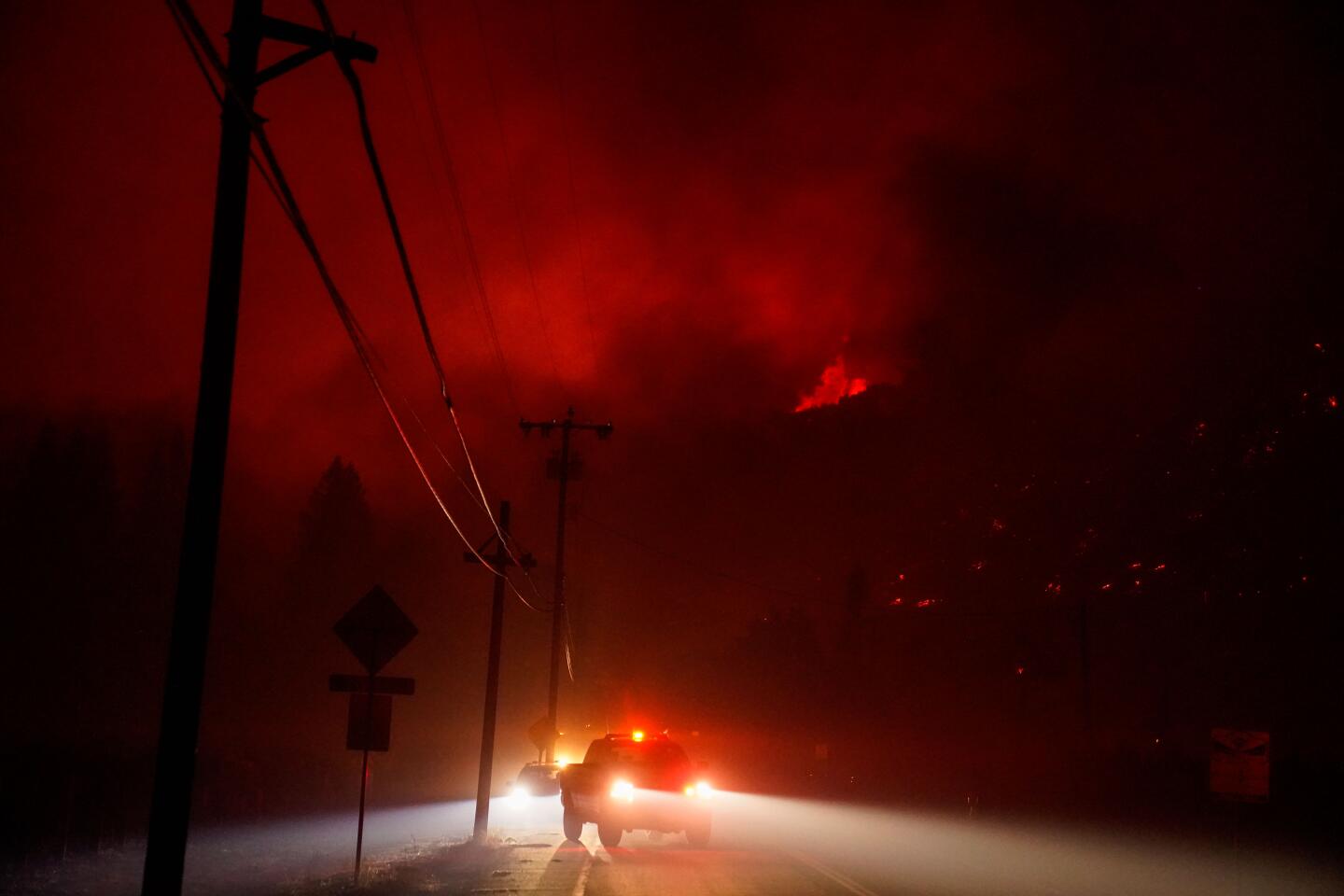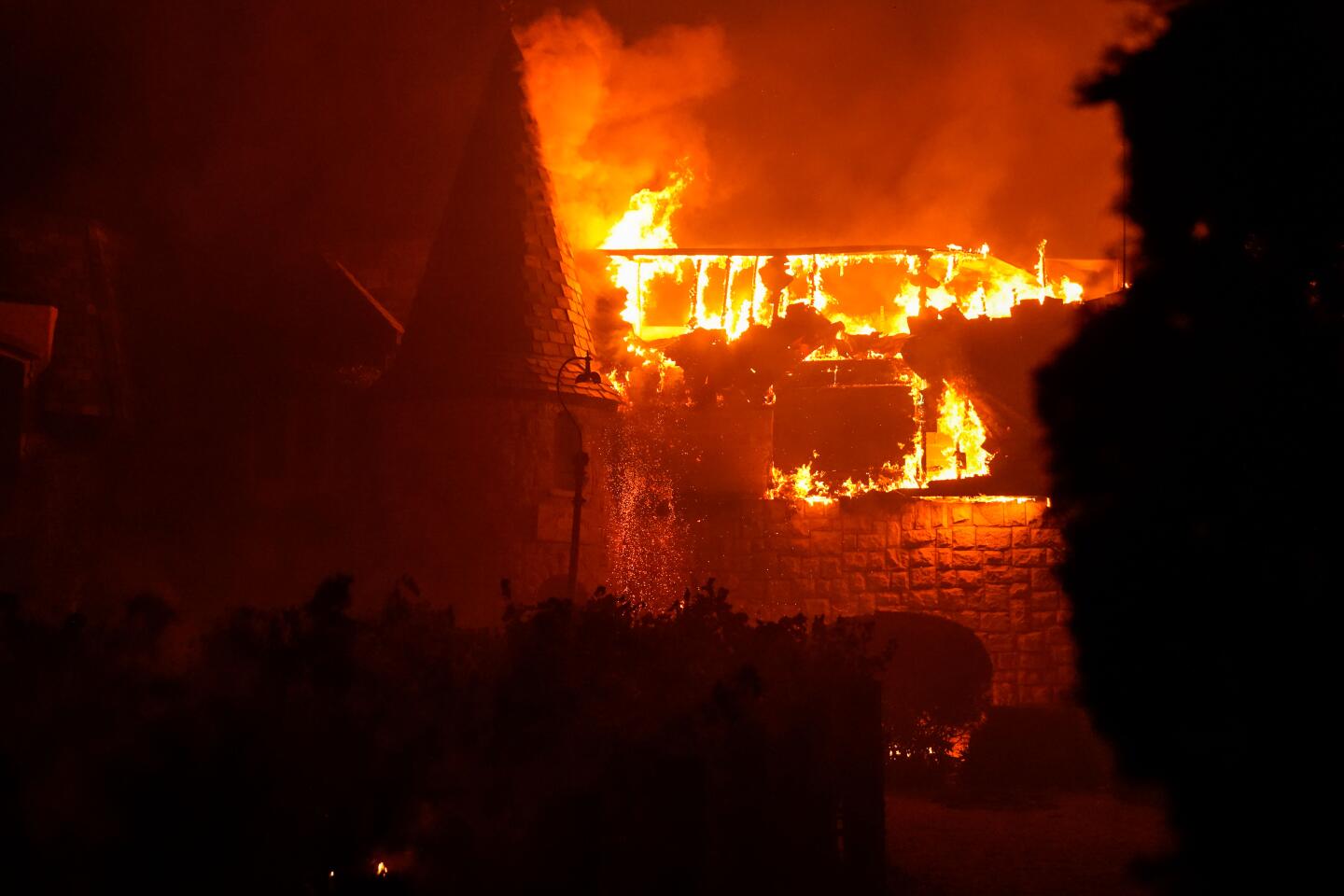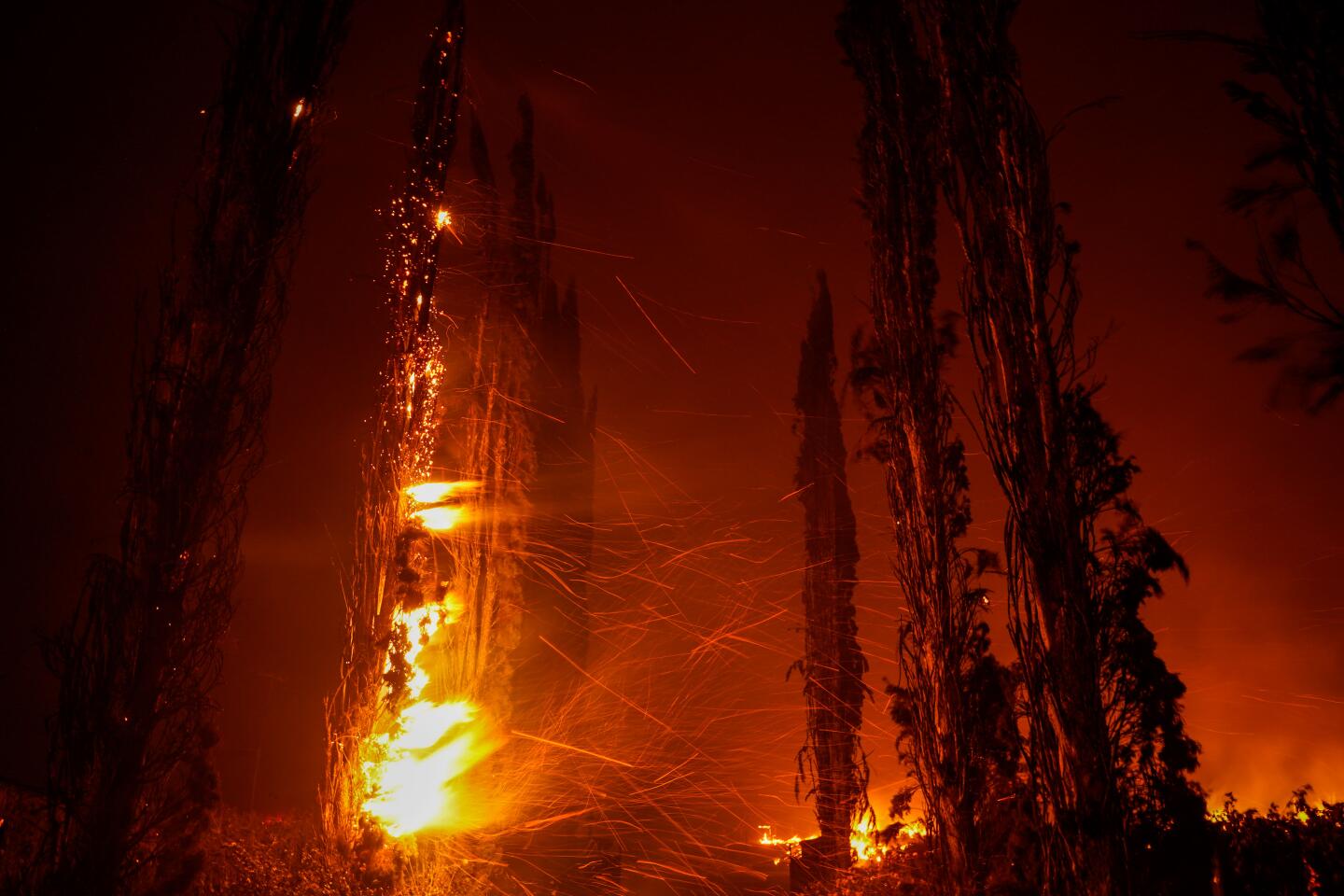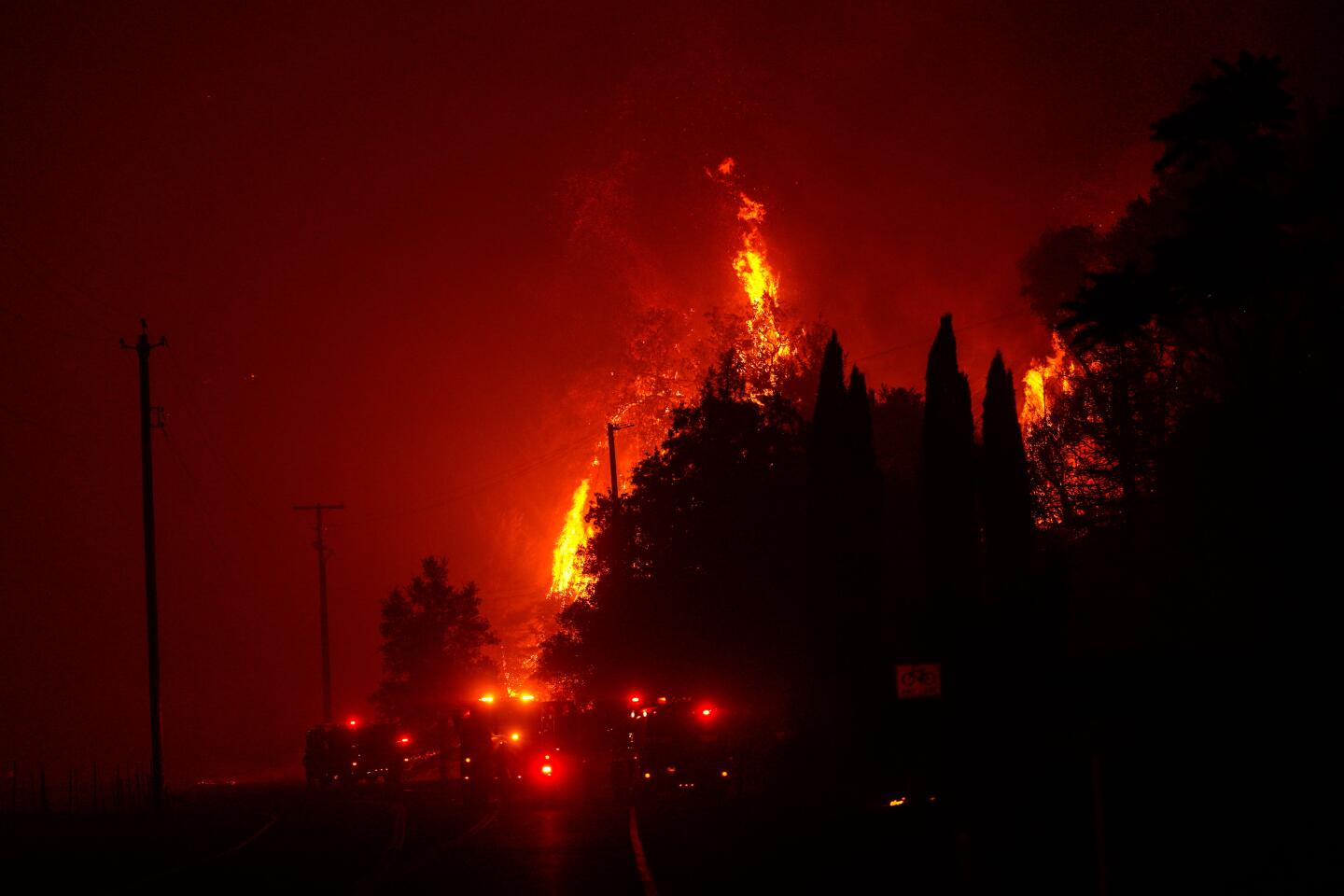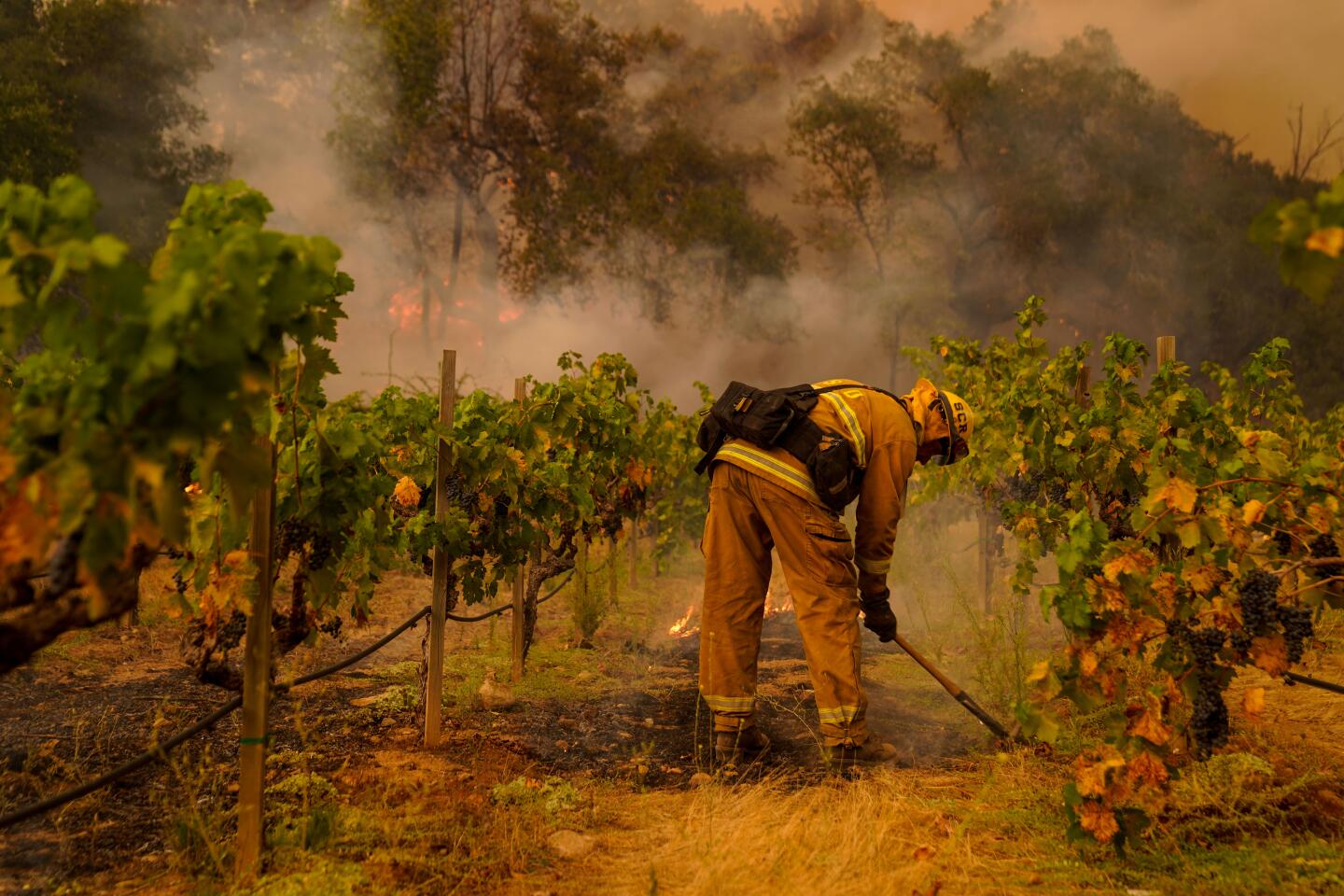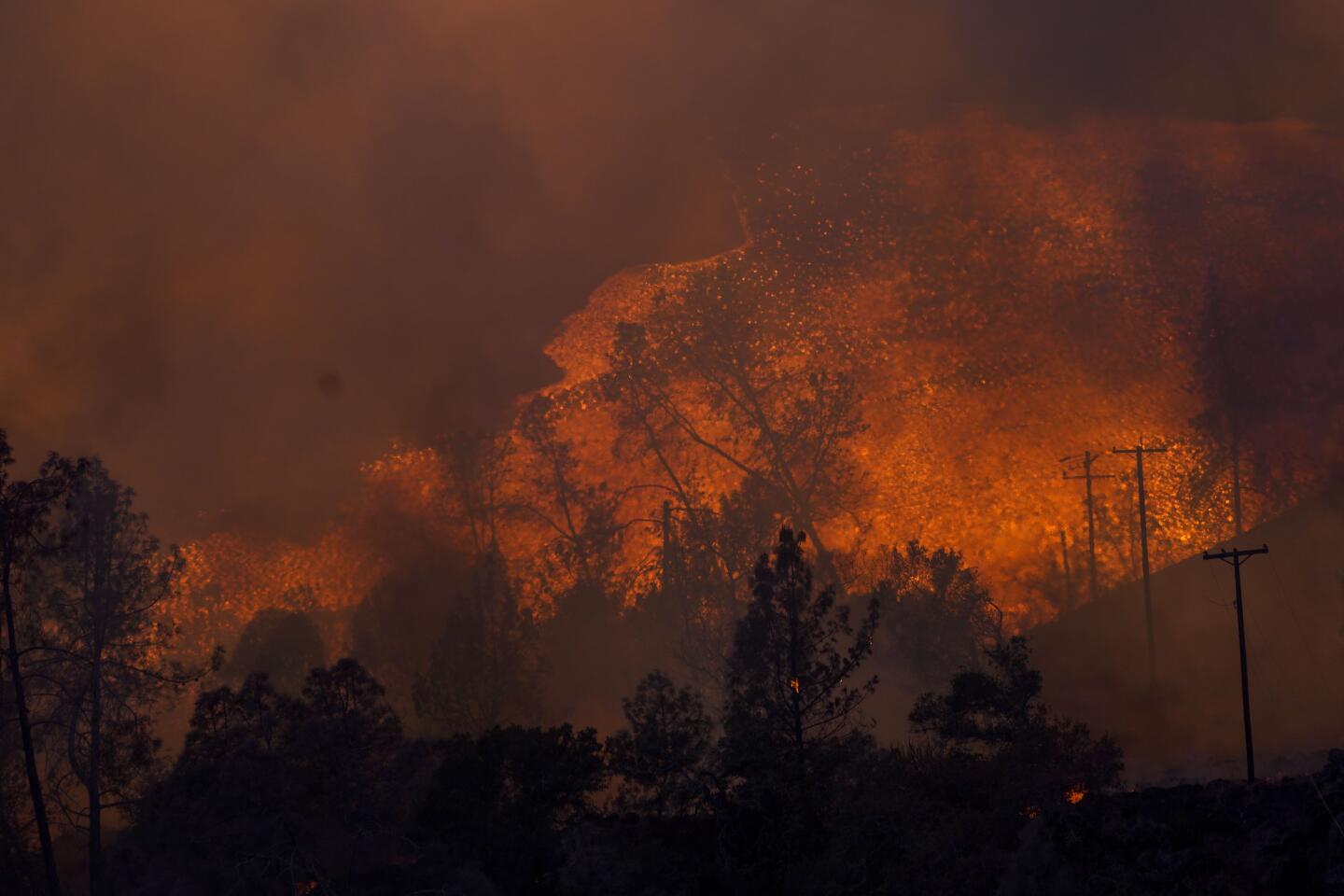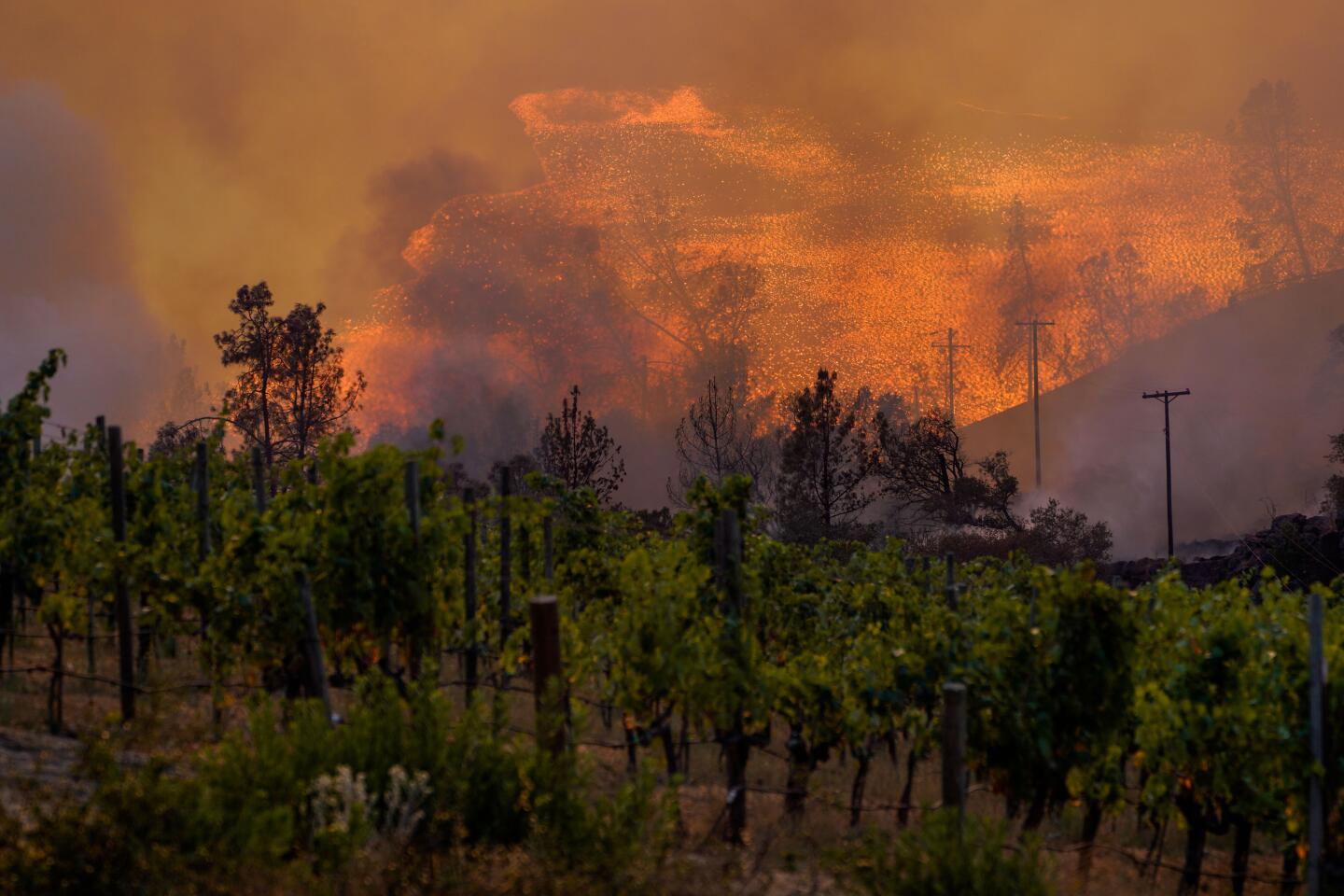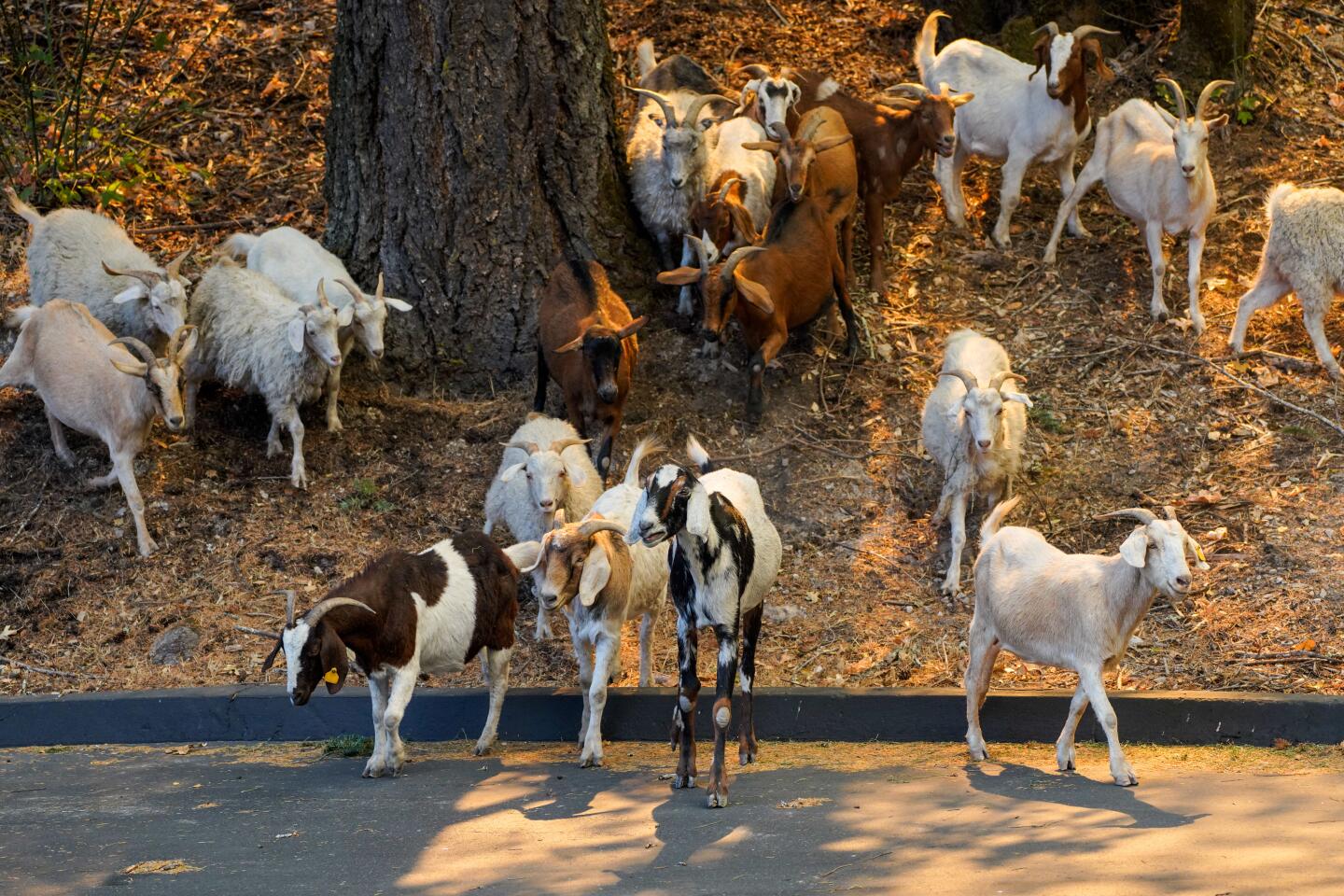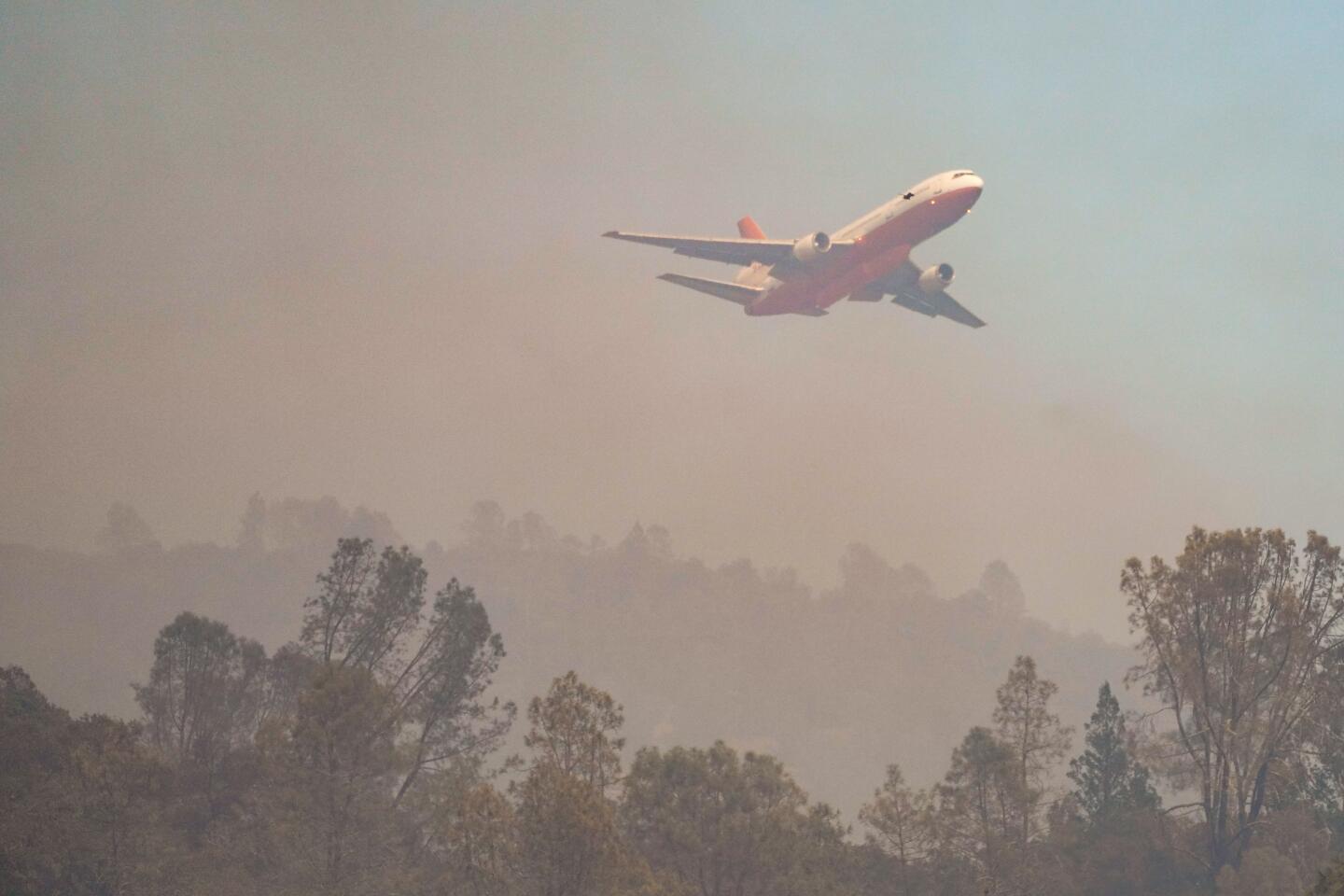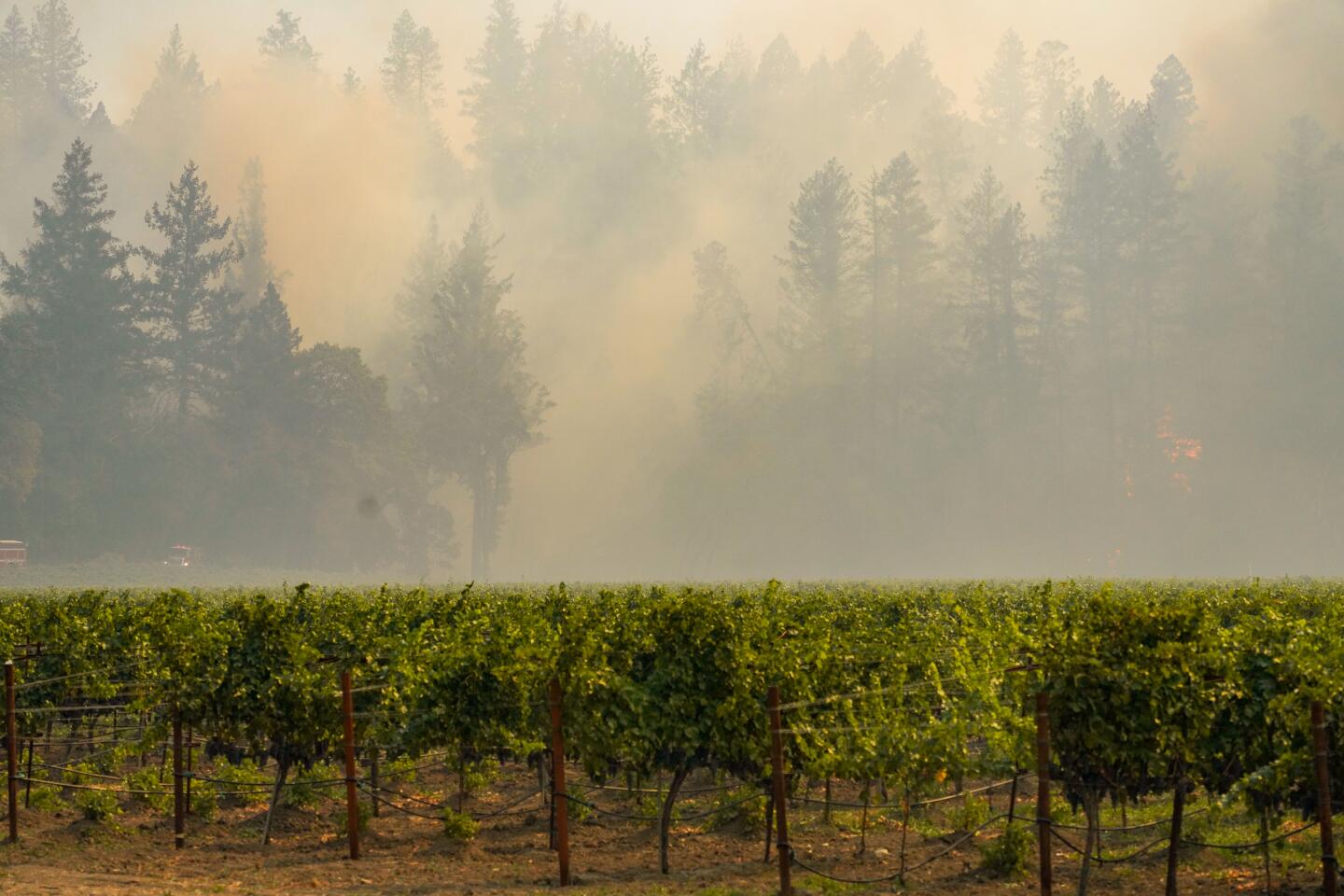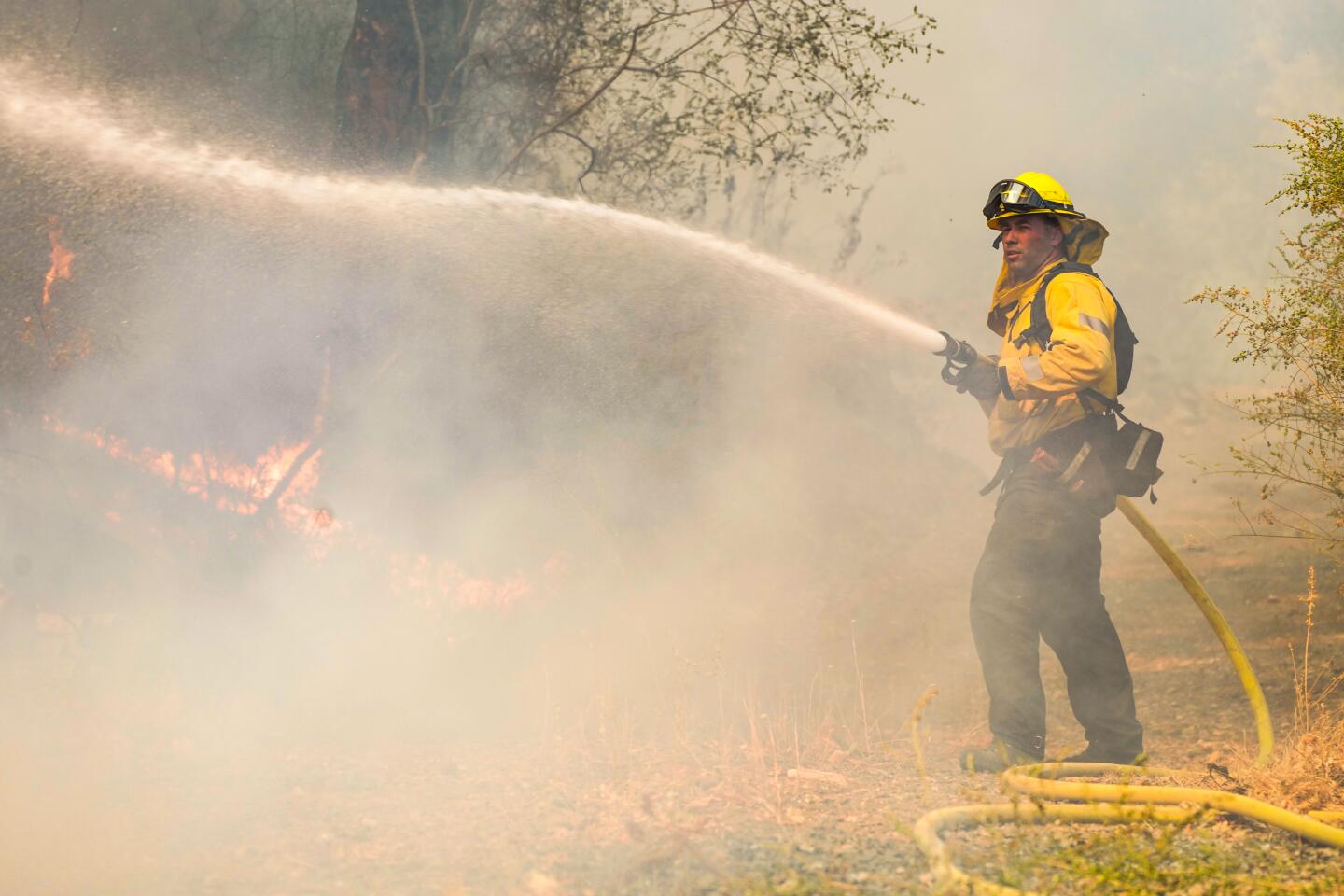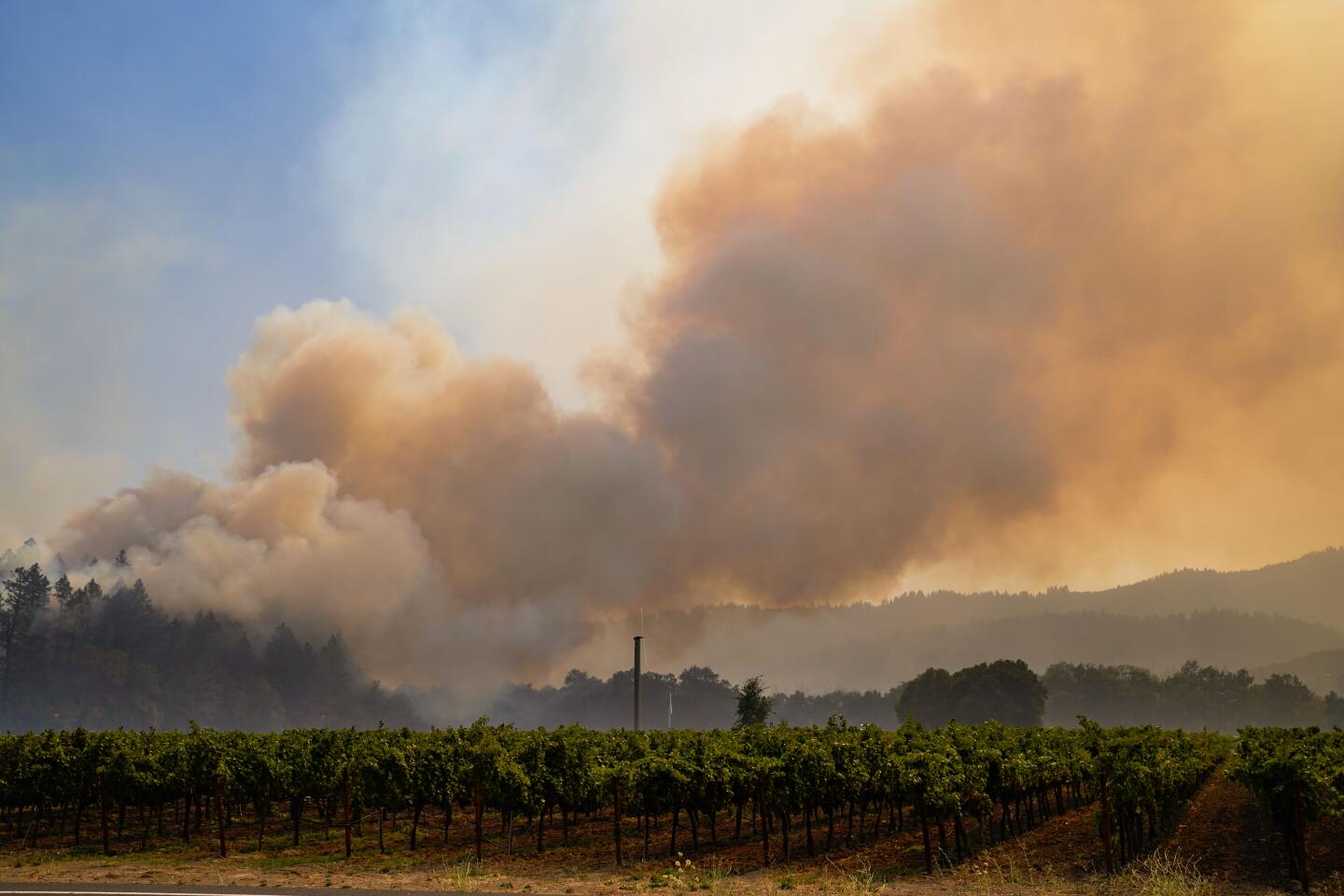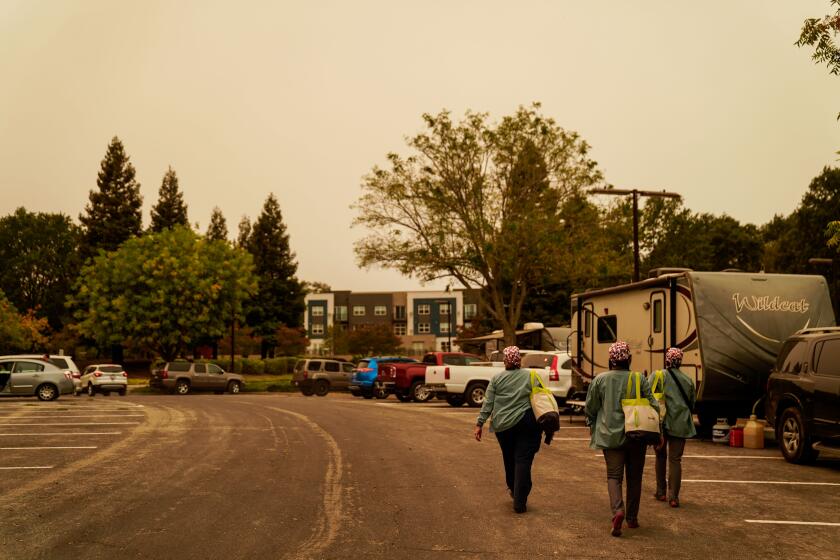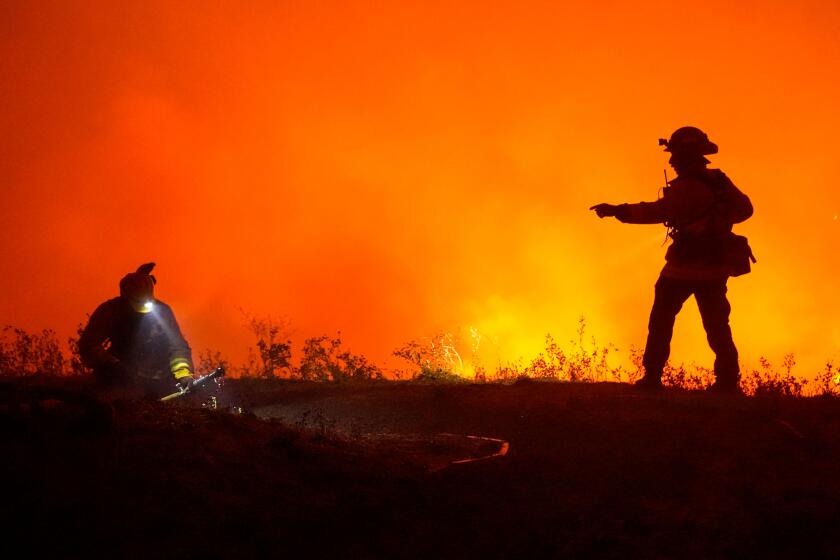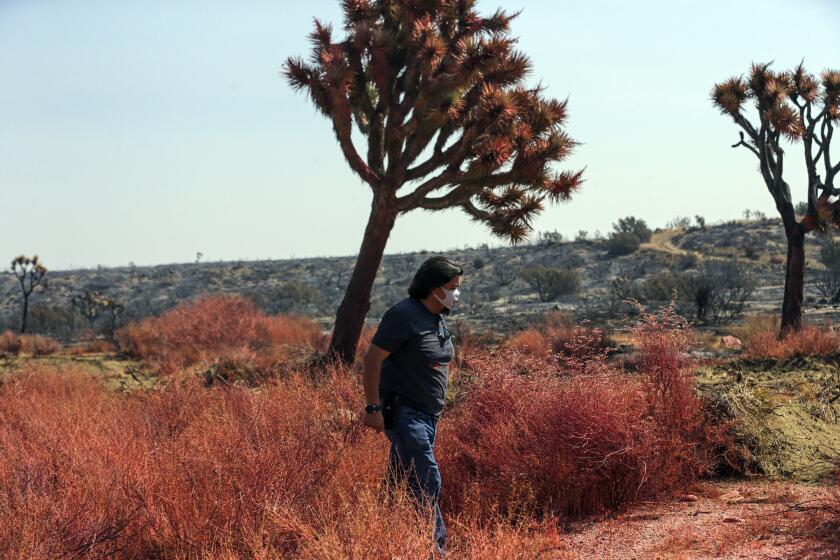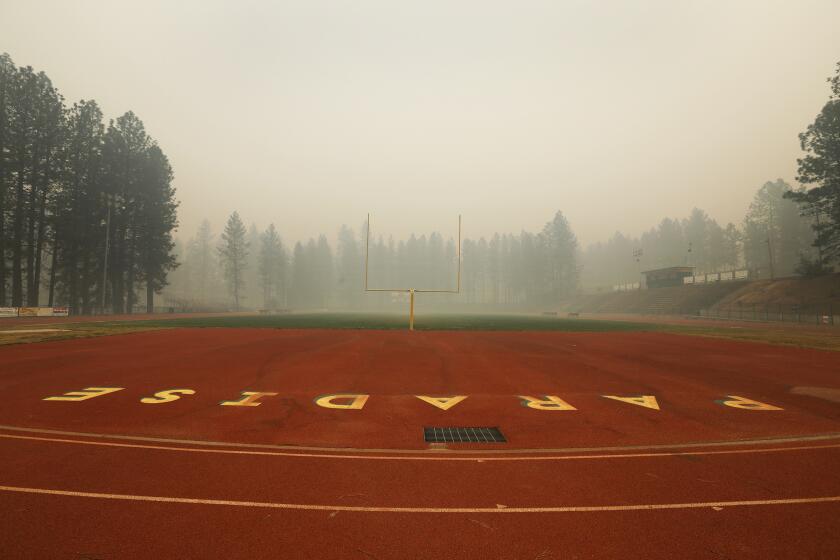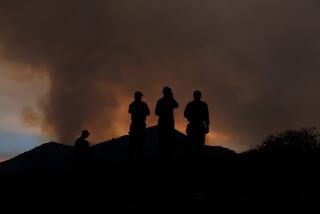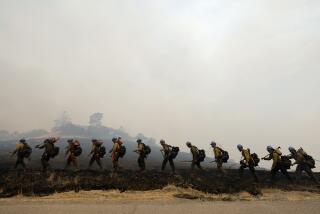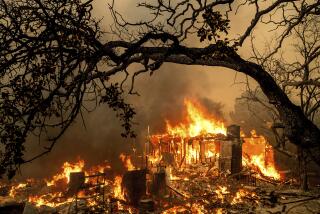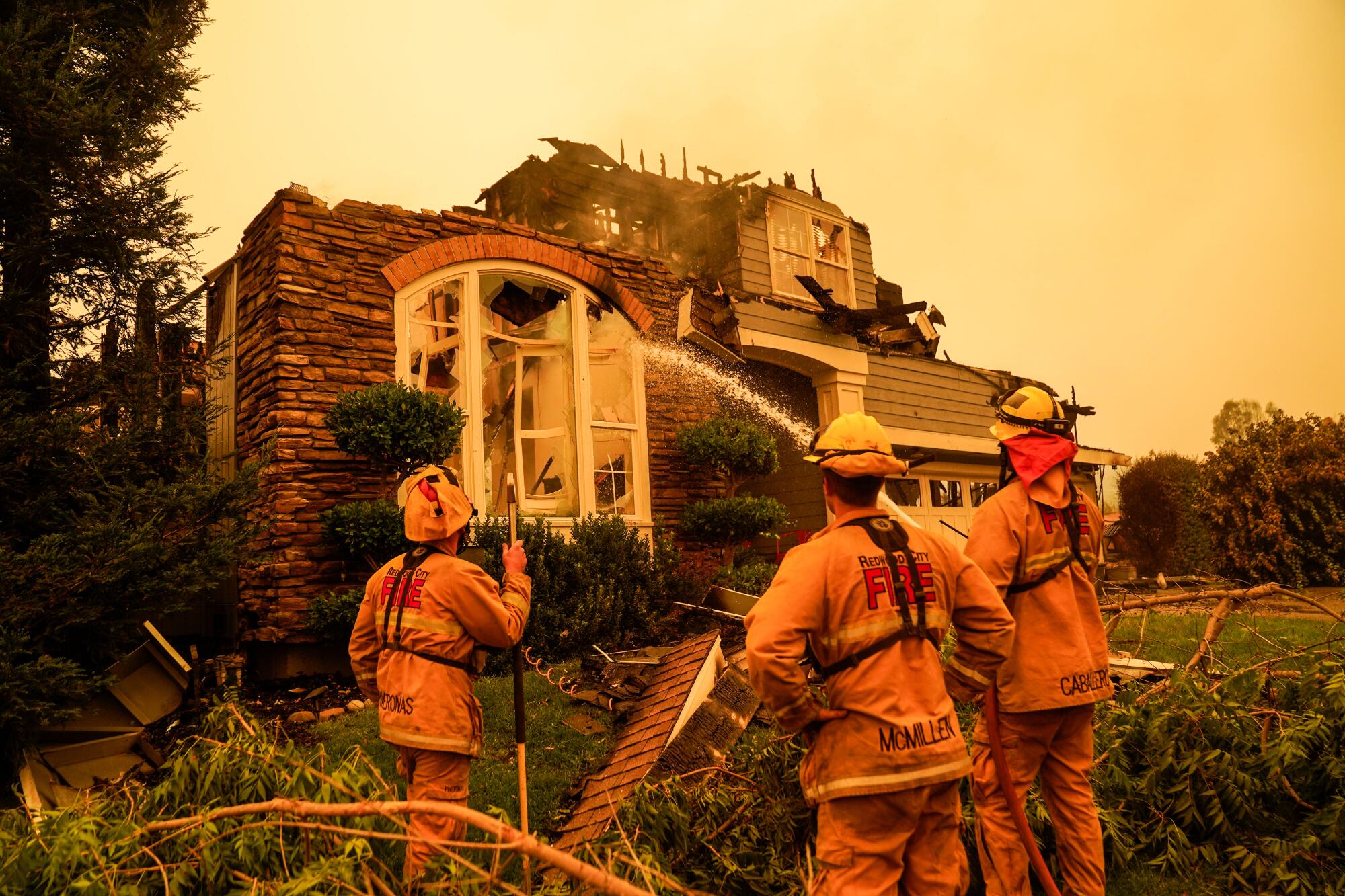
- Share via
The toll from California’s latest round of wildfires worsened Monday with three deaths reported in Shasta County and numerous structures lost in wine country, where tens of thousands have been forced to flee their homes.
The number of structures damaged or destroyed was unclear late Monday, “but there was significant loss” in some areas, according to Santa Rosa Fire Chief Tony Gossner. Almost 34,000 people have been ordered to evacuate, officials said, while more than 14,000 others have been warned that they, too, may have to leave.
In Shasta County, three people have died in another fast-moving wildfire that ignited Sunday afternoon near the rural community of Igo, about nine miles southwest of Redding, Sheriff Eric Magrini said.
The blaze, named the Zogg fire, doubled in size Monday night to 31,200 acres with no containment. It has destroyed 146 structures and is threatening 1,500 more. Magrini said authorities were still working to identify the three victims and notify their families. He urged residents to heed orders to evacuate, noting that with this fast-moving blaze, “we’re not issuing warnings.”

Another series of wildfires stormed California’s wine country overnight as flames destroyed numerous homes and other buildings in Napa and Sonoma counties and forced thousands to flee.
“When you hear those orders, evacuate,” he said. “Immediately.”
Deputies have evacuated 466 homes in the communities of Igo and Ono, displacing about 1,250 people, the sheriff said. Authorities have set up a temporary evacuation point at the Holiday Market, 3315 Placer St., Redding.
In Sonoma County, a number of homes began to burn early Monday in the suburban eastern neighborhoods of Santa Rosa. The city of 177,000 residents, Sonoma County’s most populous, was devastated nearly three years ago by the Tubbs fire, which was also driven by strong winds, and destroyed about 1,500 homes in the 1980s-built northwestern Coffey Park neighborhood.
The Shady fire on Monday, whipped by powerful, hot and dry Diablo winds coming from the north and east that showered embers onto the city, engulfed houses in the area of Mountain Hawk Drive. The roadway, lined with two-story tract homes, is in the Skyhawk development, built in the late 1990s and early 2000s.
Chief Ben Nicholls with the California Department of Forestry and Fire Protection said crews had contended with “explosive fire growth” that saw the flames “burn approximately four miles during the course of about six hours overnight.”
California’s wine county is once again facing threats from wildfires.
Officials are stressing the importance of following evacuation orders when they’re issued. Sonoma County Sheriff’s Sgt. Juan Valencia said some people refused to leave and later had to be rescued from their homes.
“Unfortunately, we did have some people that stayed behind,” he said during a briefing Monday.
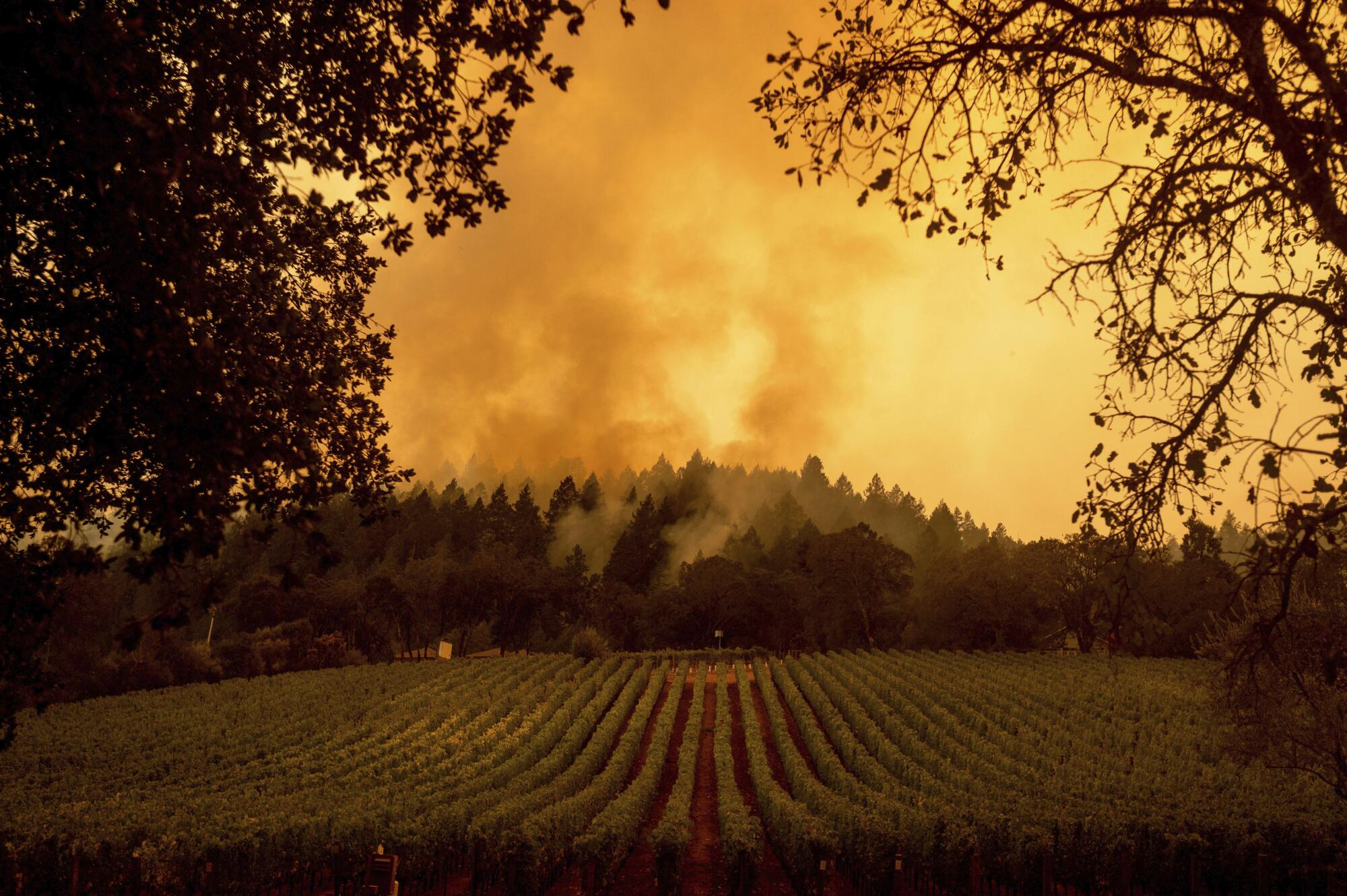
Gov. Gavin Newsom also emphasized the point, saying “the dynamics of climate change, the dynamics as it relates to the lack of forest management over the last century, have created ... real concern as it relates to the spread of these wildfires in ferocious ways.
The governor declared a state of emergency in Napa, Sonoma and Shasta counties late Monday and requested a disaster declaration from the federal government, which would bring increased aid to Los Angeles, Fresno, Madera, Mendocino, San Bernardino, San Diego and Siskiyou counties.
“We really, really cannot say it enough: Please heed local law enforcement,” Newsom said Monday. “Please listen to them when they raise that alarm bell.”
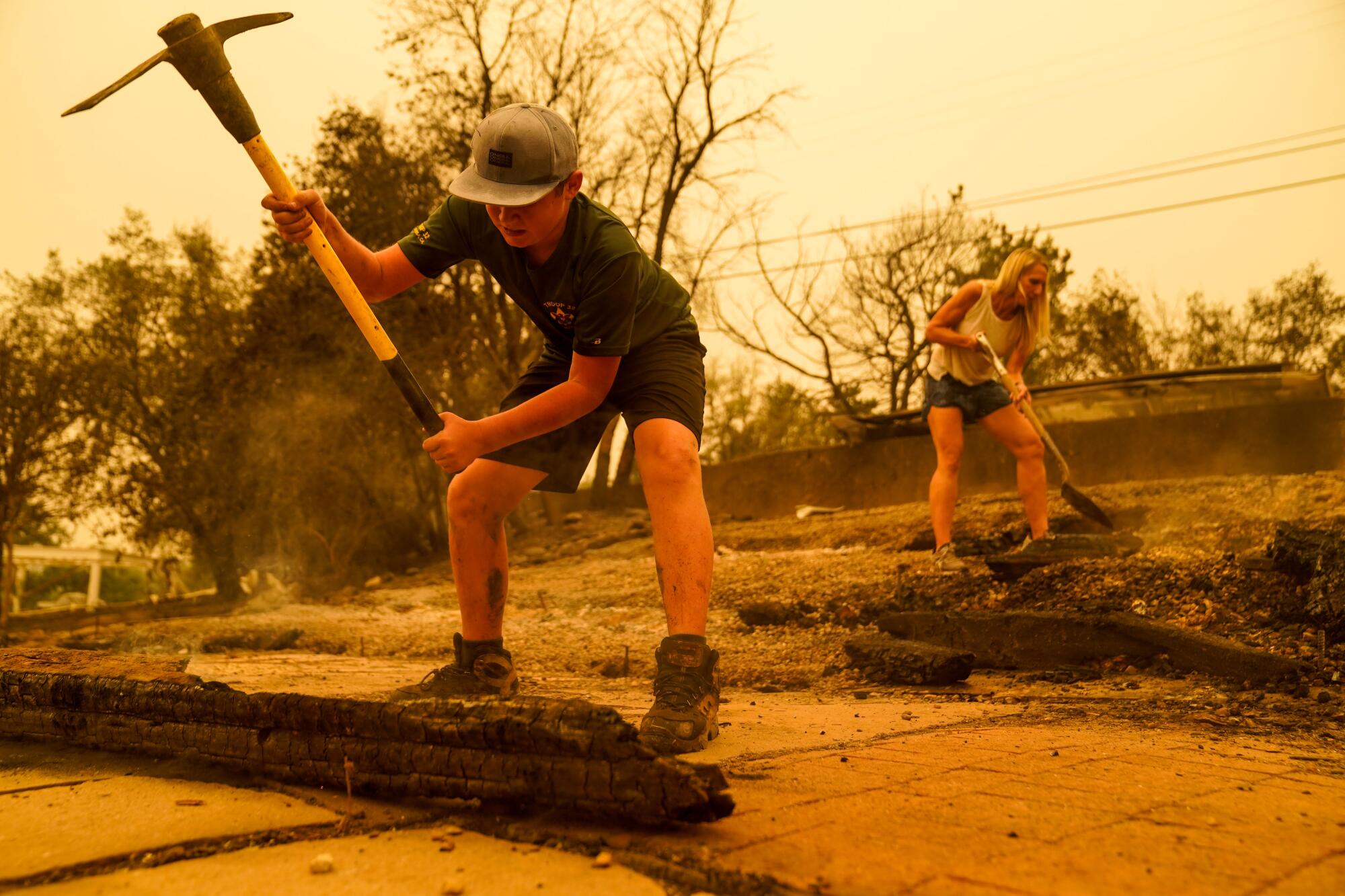
Large swaths of Santa Rosa remain under mandatory evacuation orders. Districts in the city’s northeast were ordered to evacuate, including the neighborhoods of Skyhawk, Melita, Stonebridge and Pythian. Evacuations also were ordered Monday for the Summerfield and Spring Lake areas, according to the Santa Rosa Police Department.
With flames in the distance, busloads of older people were evacuated from the Oakmont Gardens assisted-living community. Elsewhere in the city, cars jammed narrow roads as residents heeded evacuation orders.
Two other fires were also burning upwind of the blaze encroaching on Santa Rosa, both of them flanking the town of St. Helena in Napa County: the Boysen fire to the west and the Glass fire to the north.
The Glass fire burned rapidly Sunday through Napa Valley’s famed Silverado Trail, known for its wineries. One building lost was the distinctive stone structure at the Chateau Boswell Winery, which marked its 40th anniversary last year.
Cal Fire has since grouped the Glass, Boysen and Shady fires together as the Glass incident. That combined conflagration had burned nearly 37,000 acres as of Monday evening, with no containment, according to Cal Fire. It was threatening 8,543 structures. Ash could be seen falling from the sky throughout the region.
In Napa County, mandatory evacuation zones were expanded to cover the hills on both sides of the northern Napa Valley, flanking the towns of St. Helena and Calistoga, as well as parts of the east side of the Silverado Trail. The entire city of Calistoga, a community of about 5,000 people northwest of Napa, was ordered to evacuate Monday evening. Residents were directed to a shelter at CrossWalk Community Church, 2590 1st St., Napa.
The mandatory evacuation zone included the western portion of St. Helena, an area that includes single-family houses and a campus of the Culinary Institute of America, a renowned culinary college.
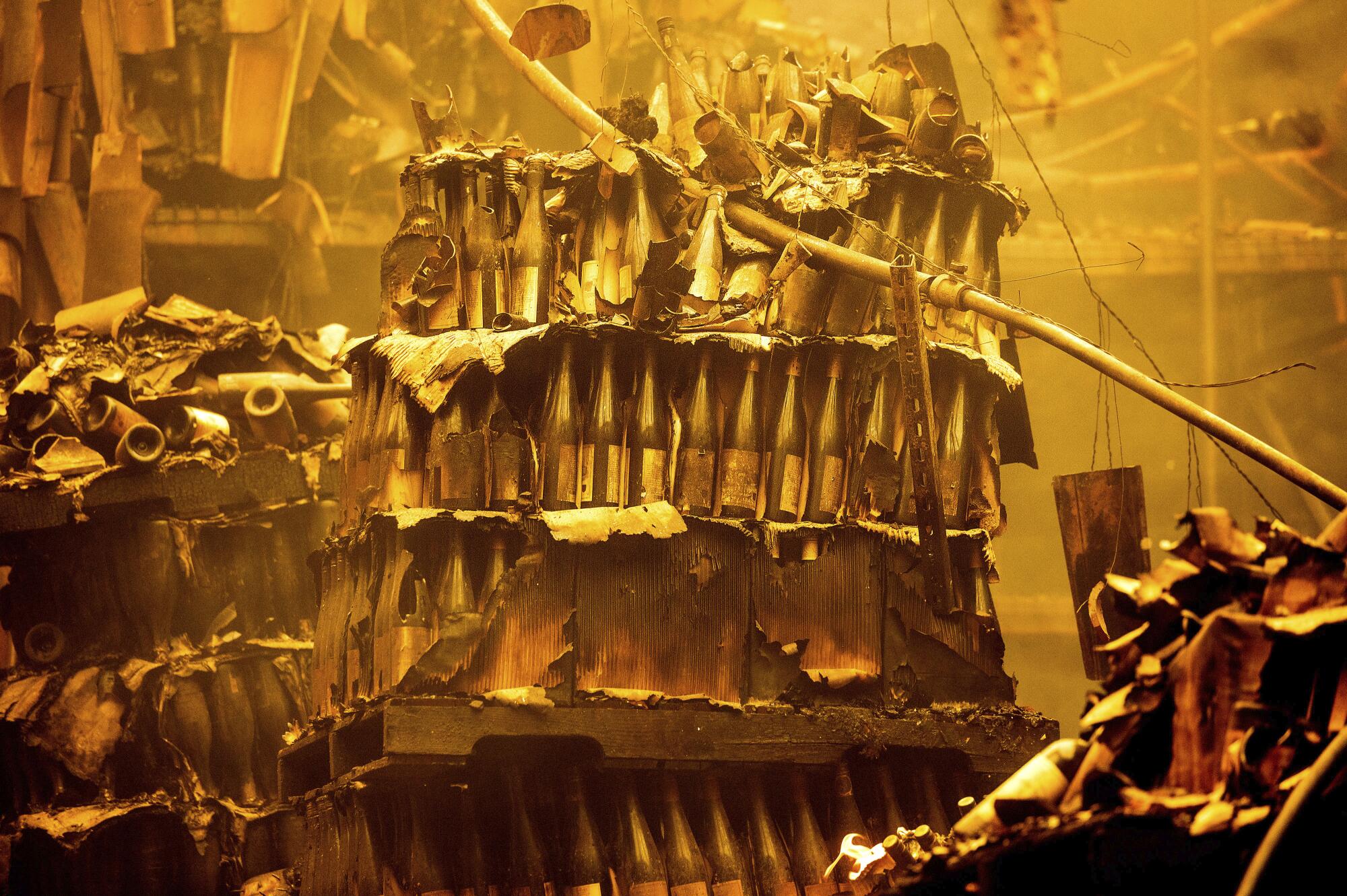
“Individuals who are seeking shelter are reminded to bring a face covering, practice good hygiene habits and adhere to physical distancing,” Napa County officials wrote in an evacuation update, underscoring the continued threat posed by the COVID-19 pandemic.
A round of evacuations was ordered in Sonoma County on Monday, covering Trione-Annadel State Park and the area to the south, as well as north of Bennett Valley Road, west of Savannah Trail and east and south of the Santa Rosa city limits.
The three now-unified Glass incident fires were burning in an area that had not experienced a major burn in the last century, Matt Roberts, a doctoral student in atmospheric science at the University of Nevada at Reno, said in a tweet.
Hundreds of families fled their homes in Vacaville on Wednesday. Some went to shelters, worried both about the flames and the pandemic.
Monday morning brought a too-familiar sight in Sonoma County: The sun turned into a smoke-shrouded red disk in the sky.
The capricious nature of the fire was evident in the Skyview neighborhood, which had been hit by heavy embers the night before.
With sweeping views of the nearby hills, most of the community’s million-dollar homes remained intact. But a stretch near the top of a hill was dotted with some that had burned to ash.
Firefighters worked to douse one green stucco house that was still aflame. Its second story had collapsed into its three-car garage.
As he stood in front of his house in Spring Lake — a neighborhood of cul-de-sacs and mature oaks nestled against the hills of Trione-Annadel State Park — Mat Tamba watched a fresh plume of smoke rising over a ridge.
“That’s the new something I just saw,” he said, worried.
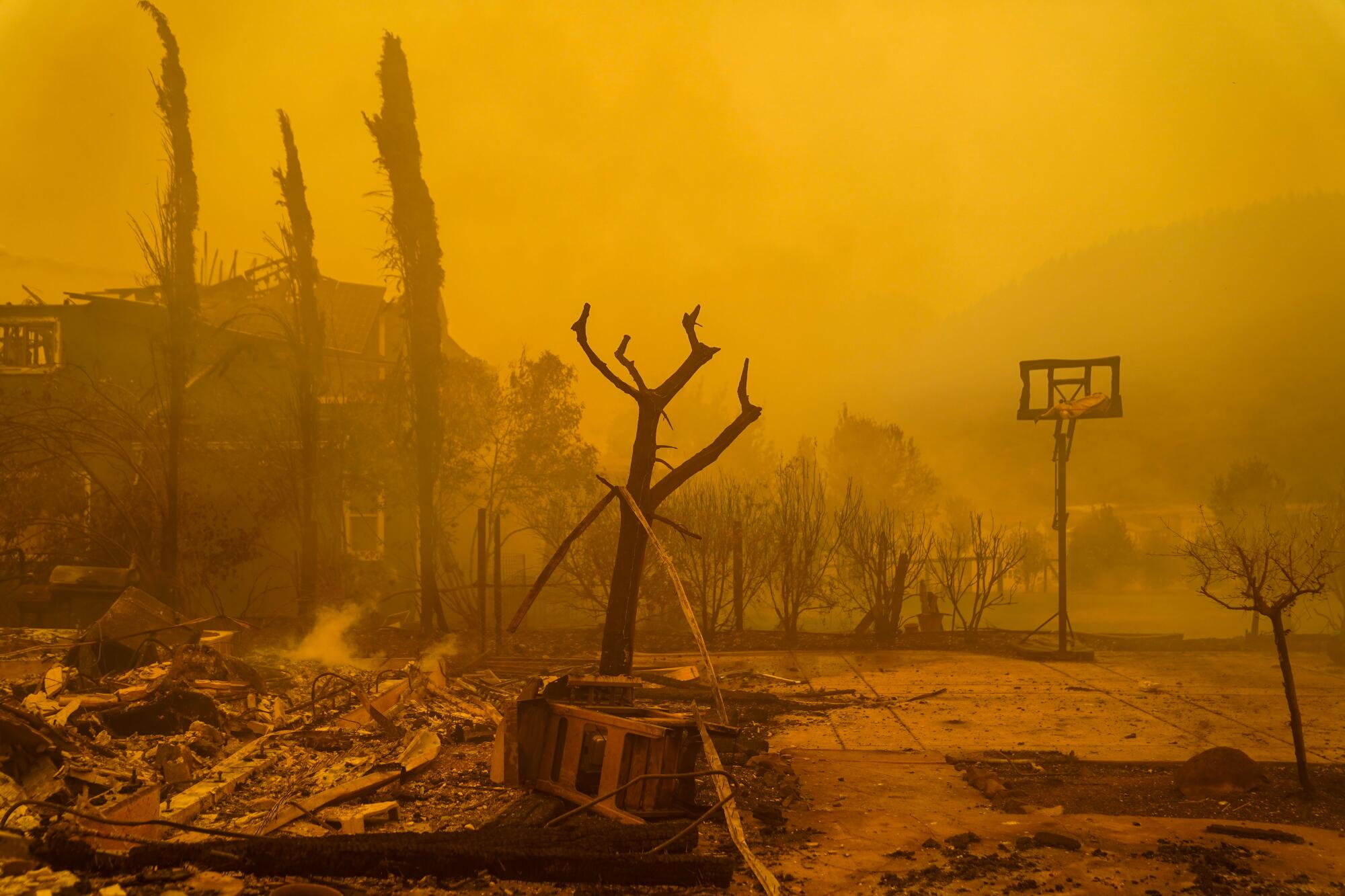
His son, Tyler, 9, daughter, Matison, 4, and wife, Noelle, had evacuated to his in-laws’ house Sunday night, but he returned Monday morning to gather more things — toiletries, a Minnie Mouse stuffed doll.
Tamba recalled how during the 2017 Tubbs fire, his in-laws lost their home in a nearby neighborhood. On Sunday night, when propane tanks began to explode nearby, he knew the situation was serious.
“That’s the sign it’s getting to the houses,” he said.
Around the corner, Marilyn Heller had already taken the advice of the Santa Rosa Fire Department and put the propane tanks from her grill on the sidewalk in front of her driveway. Like Tamba, Heller, 72, was packing up her car to get out.
She and her husband, Robert, have lived in their ranch-style house since 1974. Now, everything sentimental — including hand-me-downs from her grandmother and aunt — was packed up in dozens of boxes.

As Heller kicked at burned leaves and embers in the gutter, she said she and her husband had discussed staying Sunday night until they saw flames. Her son, a former Marine, had purchased them special heat-resistant straws in case they needed to jump in the pool to survive. But she didn’t “want to be in the way of the Fire Department.”
Not far away, Ben Illia, 30, was hosing down his yard and had a sprinkler going on the grass. He said he didn’t intend to leave until he saw flames. He owns a water truck, originally purchased to fill pools, but it has seen more fire action in recent years.
“I don’t think it will reach this far,” he said, noting that the wind had given way to a heavy stillness, broken only by the hum of the generator he purchased last year after planned electricity cutoffs left him in the dark.
Despite the risks, Illia said this is a neighborhood he loves.
“It’s a good place besides the power outages and the fires,” he said.
Angwin resident James Burville evacuated his home at 5 a.m. Sunday after a power outage.
He went to his church in Calistoga — only to awaken the next morning to find that area being evacuated. After spending more than three hours in a registration line at the Napa County Evacuation Center, he is now hoping for a room and some rest.
Although the Tubbs fire came within 10 miles of his home, he said this experience felt worse.
“I may lose all my belongings,” he said, “and because we had no power, I missed taking my most important things with me.”
Burville had already been thinking about moving closer to his immediate family in Oregon, but the current situation, he said, made him want to move sooner.
Rincon Valley resident Randi Cornwall said her family was lucky to live in a small pocket of Santa Rosa that survived the 2017 Tubbs fire, the 2019 Kincade fire and the wildfires last month. But, she said, fear and bad memories remain.
“The Tubbs trauma is real,” Cornwall said. “When you have seen fire move fast before, you know to get the hell out before traffic backs up and fire is licking at your cars.”
Fire tore into the edge of Santa Rosa on Sunday night, bringing destruction and memories of the 2017 Tubbs fire.
With a full house — three school-age kids, distance learning because of the pandemic, as well as her mother and father, who were evacuated from Napa — the situation is bordering on overwhelming, she said. Ash has blanketed the area, and her family has air filters running in every room.
“My teens are now sending me homes on Zillow out of the area,” she said. “We are all in some form of therapy. My 6-year-old needs me to hold her when she smells smoke.”
As a fifth-generation Sonoma County resident, Cornwall says she feels deeply rooted in her community, and she struggles with the idea of leaving. But after seeing more than 20 of her friends lose their homes to fire — and so many others forced to evacuate — she is growing weary of living in a hypervigilant state.
“I don’t think I can overstate the exhaustion from it all,” Cornwall said. “And we are the incredibly lucky ones who haven’t lost our home.”
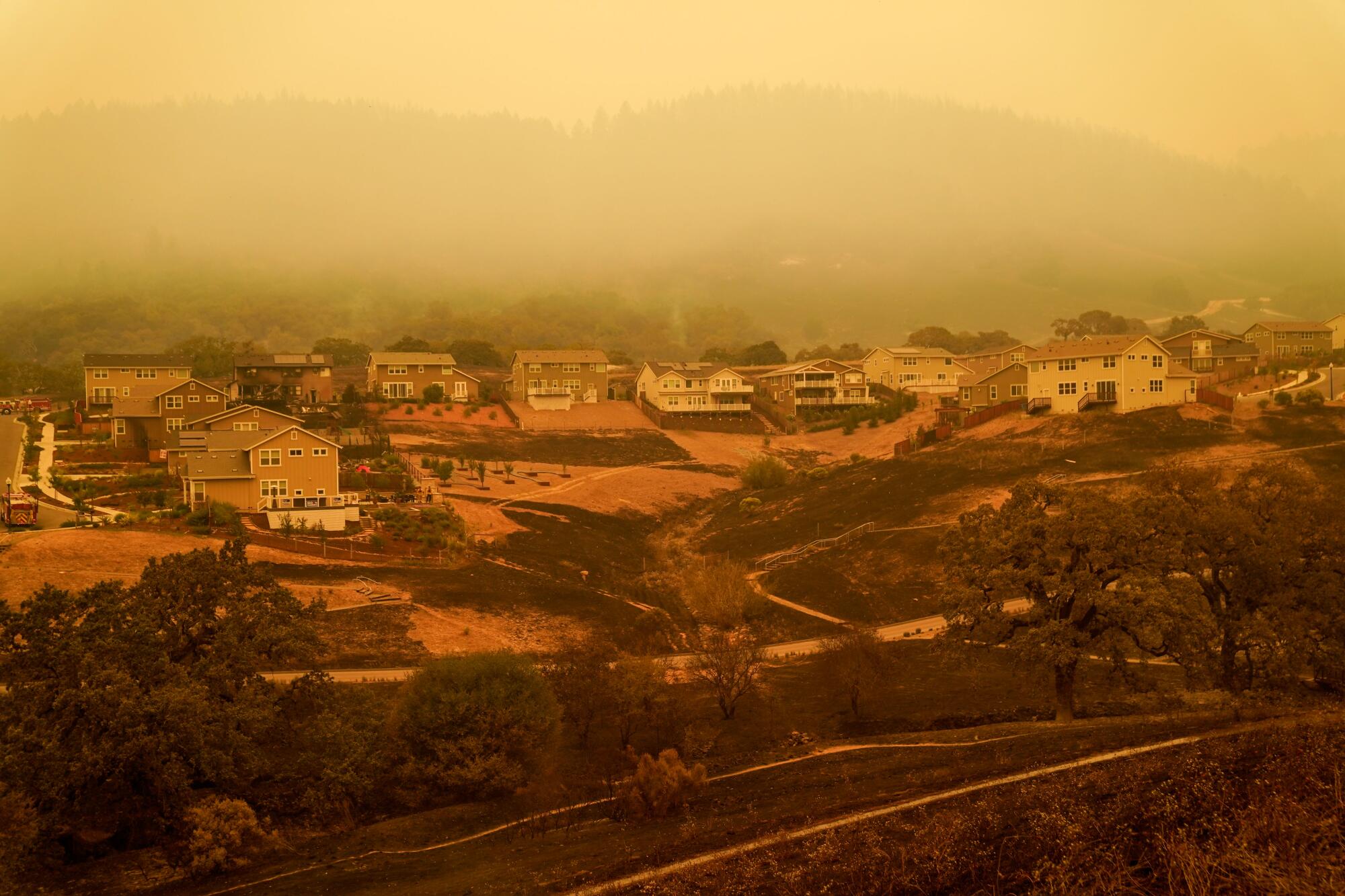
Three years ago, Jeff and Birgit Sengstack had to flee their home near Santa Rosa in the middle of the night as embers fell like rain. Their home of 18 years was ablaze two minutes after they pulled out of their driveway.
They spent three years rebuilding and finally moved back in July.
On Sunday, fire returned. From his porch, Jeff Sengstack said he could see flames shooting hundreds of feet into the sky.
“We were totally stressed out last night,” said Sengstack, 71, who is now semiretired. “It was pretty much chest-tightening, headaches, worried about getting ready to leave, making preparations.”
On Monday, the couple’s hilltop home was one evacuation zone away from a neighborhood that had received an evacuation advisory. The fire was four miles away.
“You have to be confident,” Sengstack said. “It is unpredictable, but the winds are relatively calm right now. They are now posting fire crews all along the neighborhoods in Santa Rosa, and it appears to be generally paying off.”
The Shady fire erupted and quickly moved toward Santa Rosa, barreling between the Northern California burn scars of 2017’s Tubbs and Nuns fires.
Wildfires are nothing new in wine country. The region has seen several significant blazes in recent years — including the Tubbs fire, Kincade fire and this year’s LNU Lightning Complex fire, which has burned more than 363,000 acres in Sonoma, Lake, Napa, Yolo and Solano counties.
That fire, the fourth-largest in recorded state history, has been blamed for five deaths. It was 98% contained as of Monday.
“My heart also aches for everyone who’s been displaced, who’s been injured, who’s been evacuated, who’s lost property,” U.S. Rep. Mike Thompson (D-St. Helena) said Monday. “It’s just one more year of the same thing, and it’s getting a little old.”
Because of the Diablo winds, much of Northern California is under a red flag warning, meaning the National Weather Service is highly confident there will be dangerous fire weather conditions.
The National Weather Service issued a red flag warning for the Los Angeles and Ventura county mountains and the Santa Clarita Valley.
Such windy conditions can easily loft embers into the air, where they travel and land downwind, igniting new spot fires.
The warning is in effect until 9 p.m. Monday, with forecasters predicting critically low humidity and wind gusts that could reach up to 50 mph at high elevations. The Bay Area is also under a heat advisory until 7 p.m. Monday.
Such weather conditions also present a challenge for crews working to wrangle existing fires.
In Butte County, where the deadly North Complex fire is still burning, the Sheriff’s Office issued an evacuation order Sunday night for Pulga, Concow, Big Bend and Yankee Hill, as well as an evacuation warning for the town of Paradise, which was mostly destroyed in the 2018 Camp fire that resulted in 85 deaths and the loss of more than 18,000 structures.
Shawnee Rickson, who has lived in Paradise her entire life, said her family’s home was one of the few left standing after the Camp fire swept through the town.
“Fires are now the scariest thing,” she said, noting that her family always keeps a “fire box” with important documents and pictures ready in case of evacuation.
“Unfortunately, it’s a normal thing that we are getting used to,” she said.
Evacuations are underway for several small California towns devastated by the Camp fire in 2018 and are now threatened by the North Complex fire.
The latest rash of wildfires adds to what’s already been a historic and devastating fire season in California. So far this year, over 8,100 wildfires have ignited statewide — burning more than 3.7 million acres, killing 26 people and consuming over 7,000 structures.
Five of the six largest wildfires ever recorded in California have started since August and are still burning, according to Cal Fire.
Times staff writers Maura Dolan, Alex Wigglesworth and Kent Nishimura contributed to this report.
More to Read
Sign up for Essential California
The most important California stories and recommendations in your inbox every morning.
You may occasionally receive promotional content from the Los Angeles Times.
